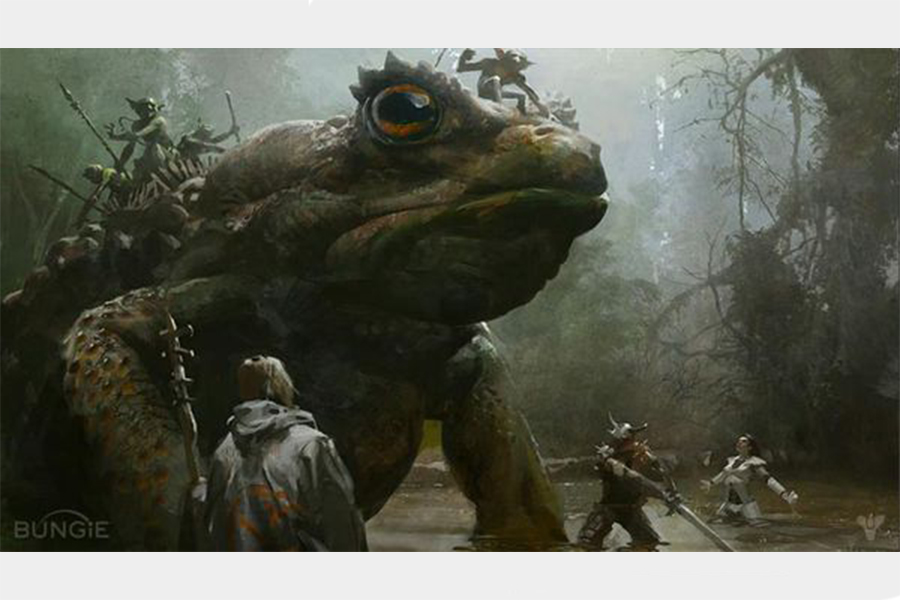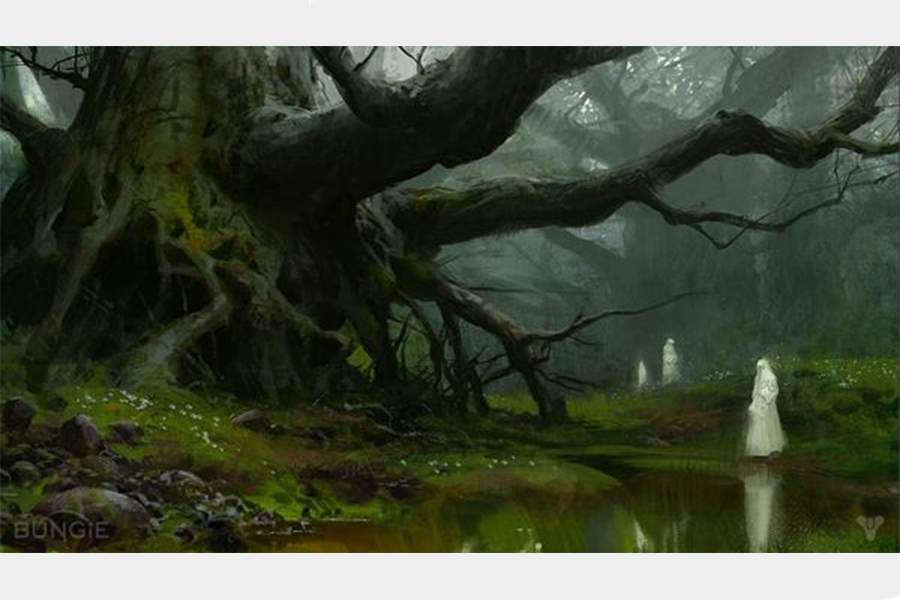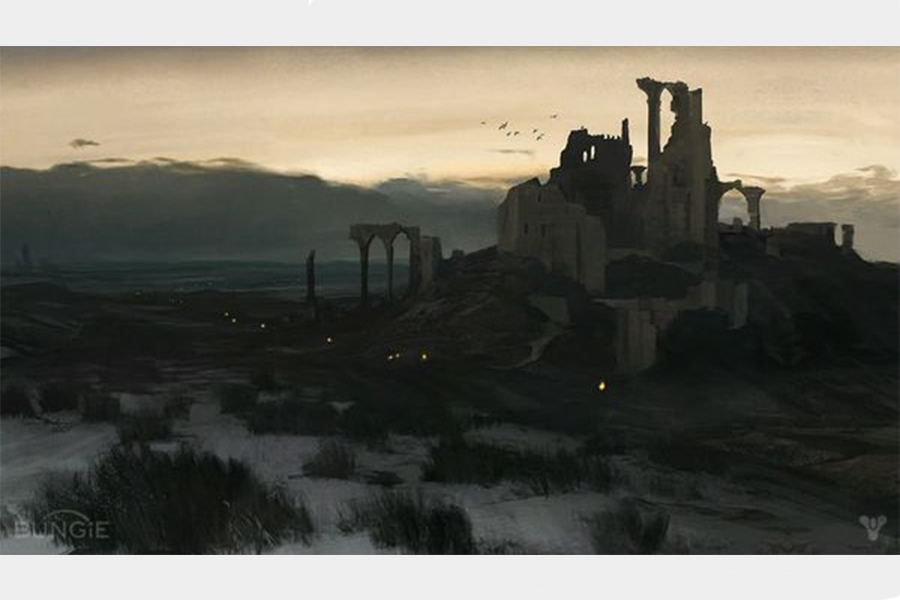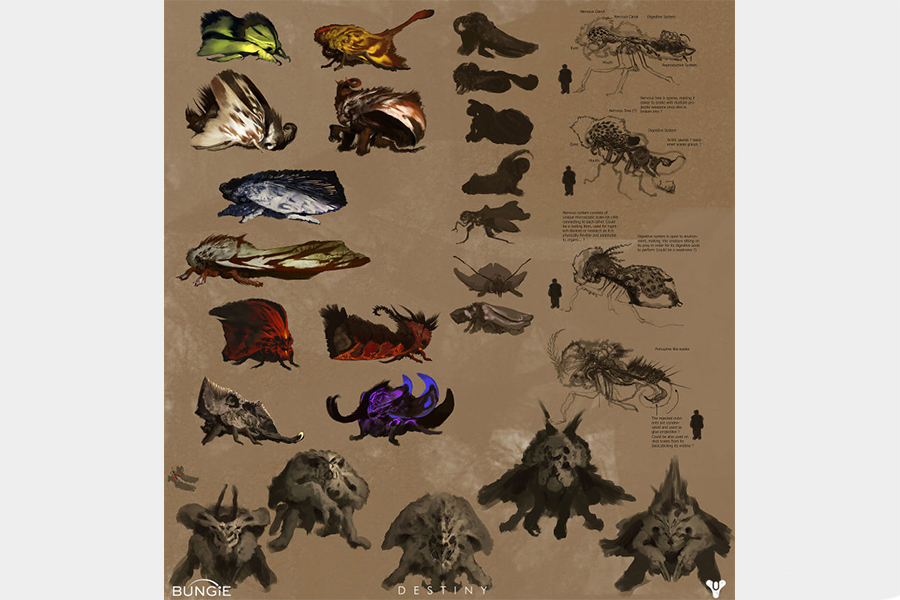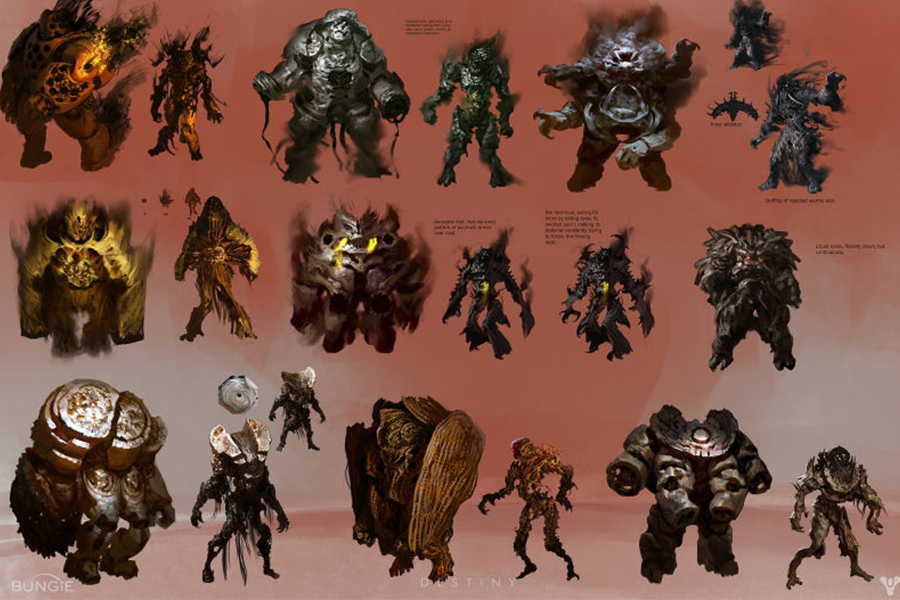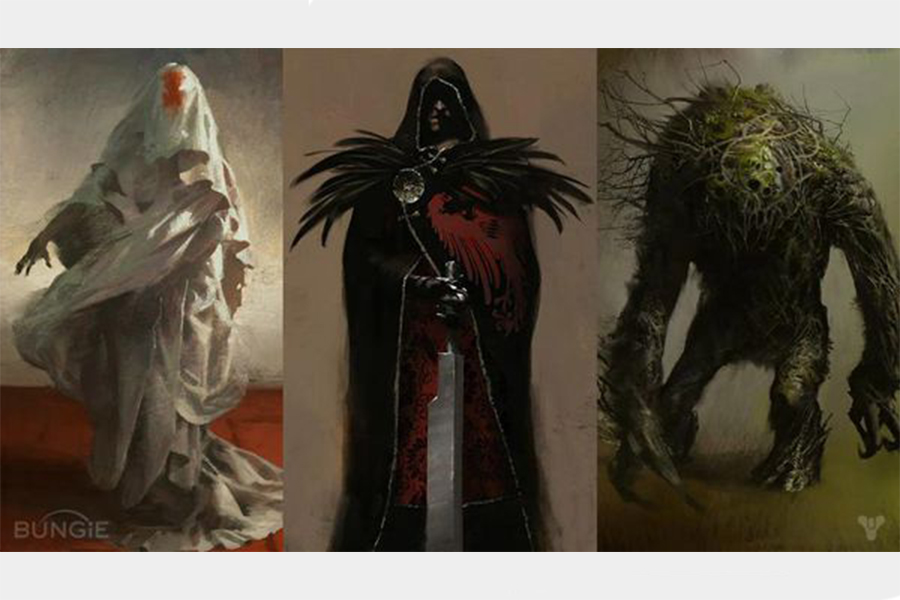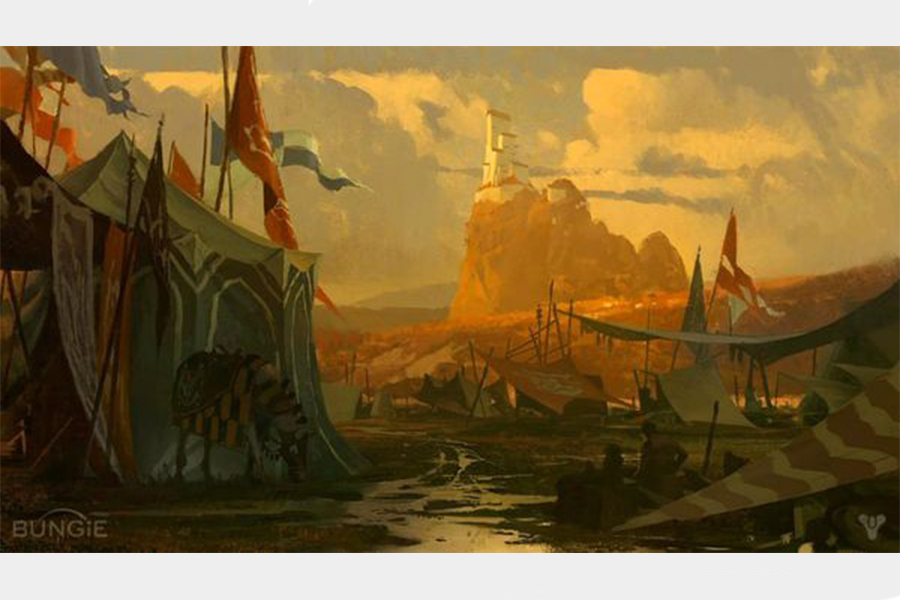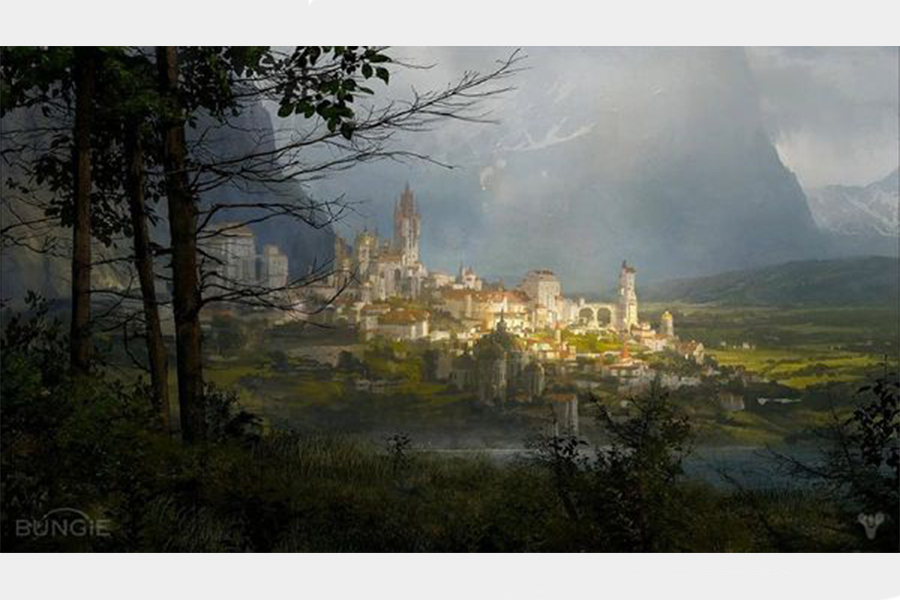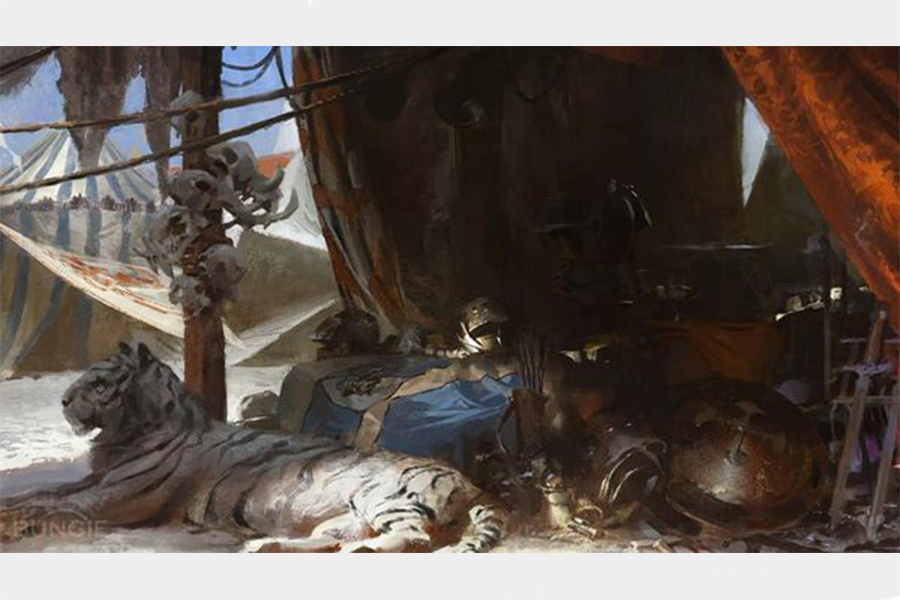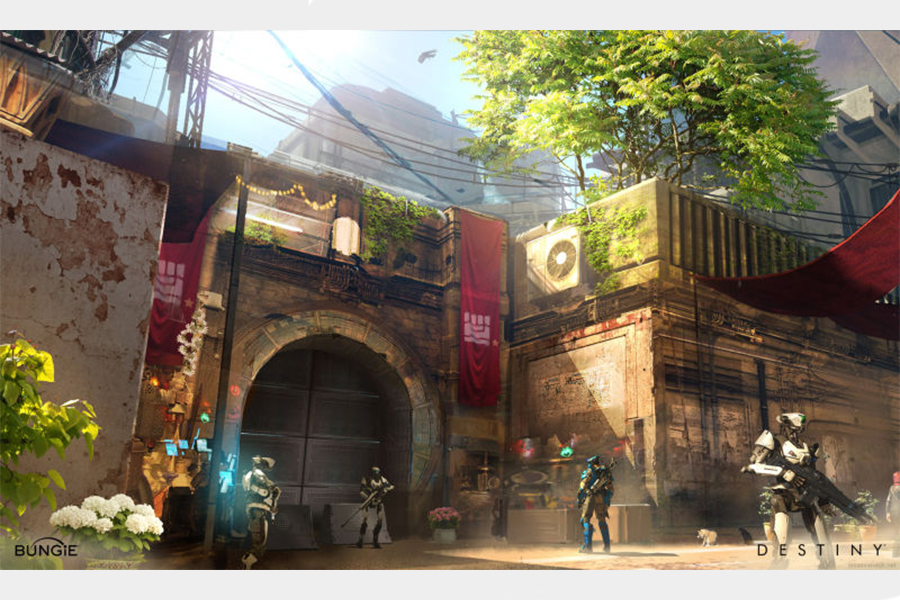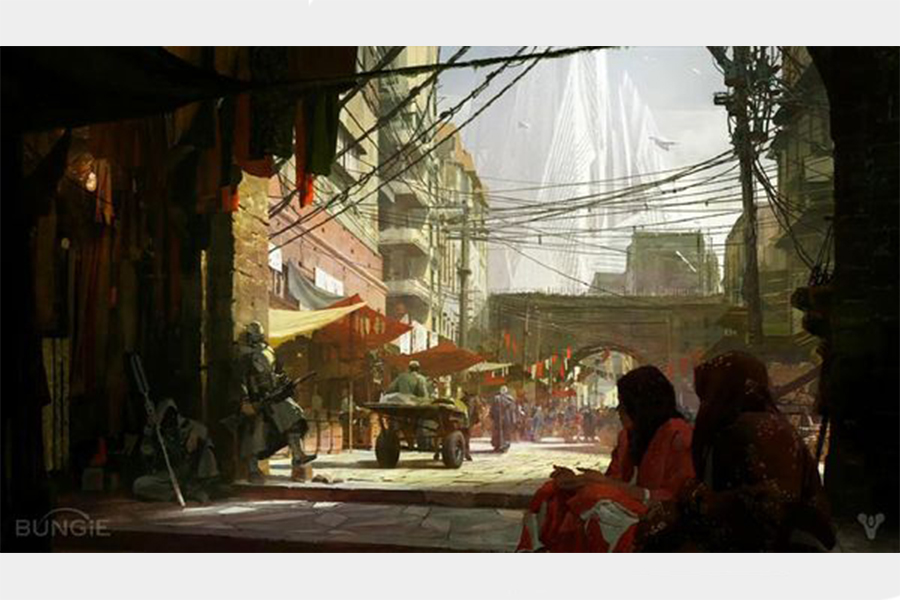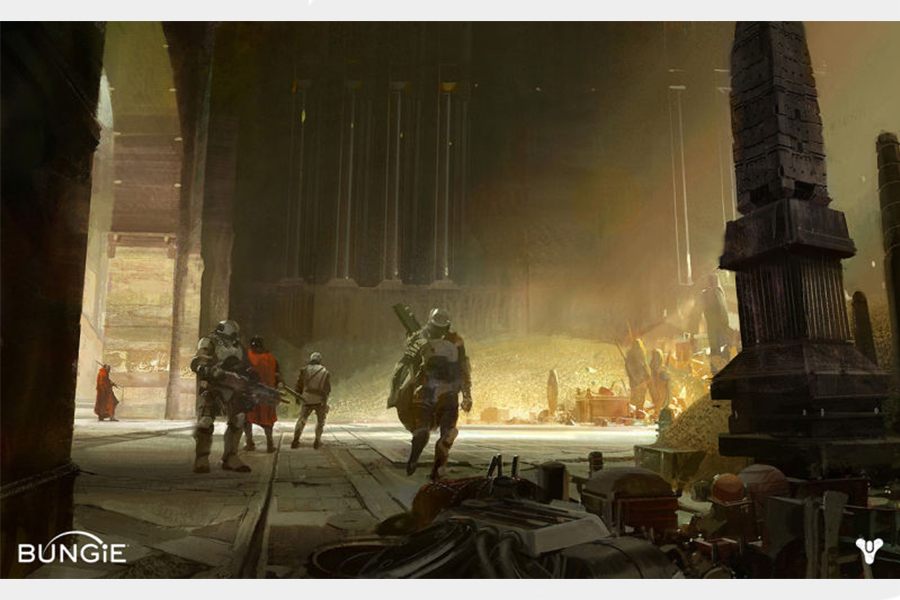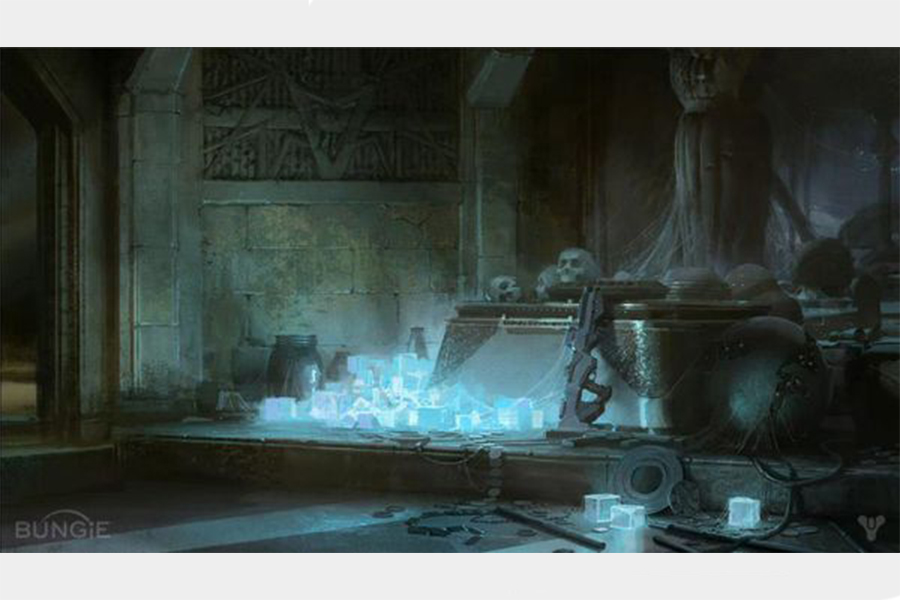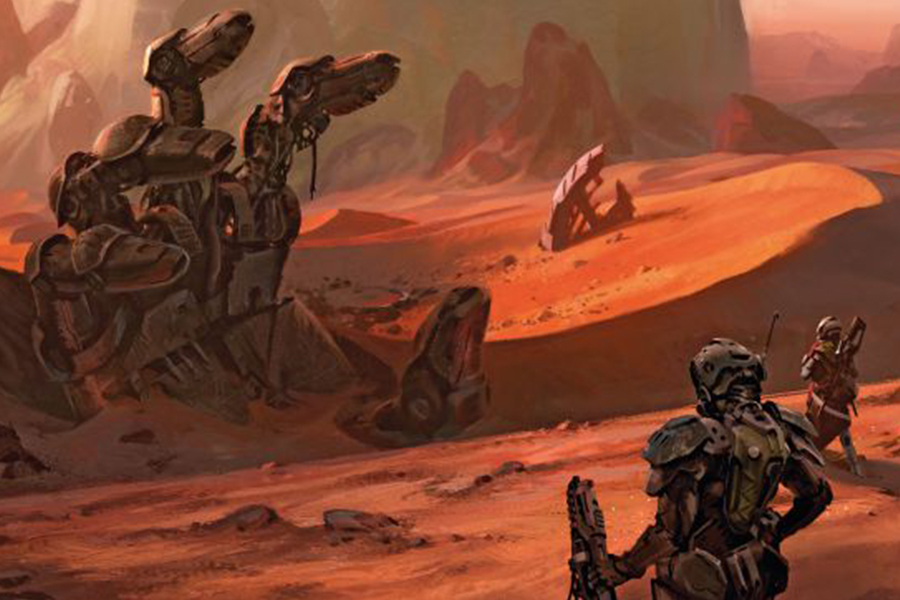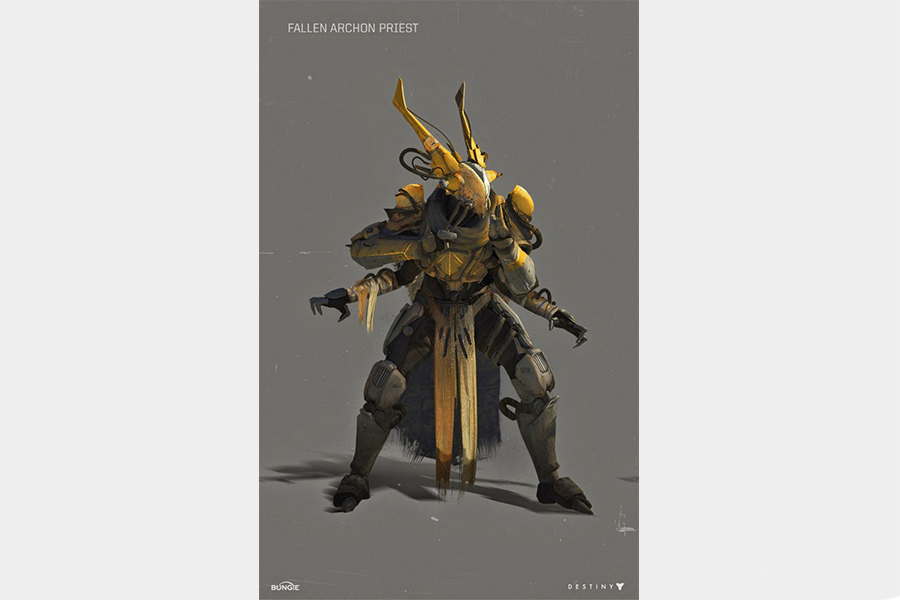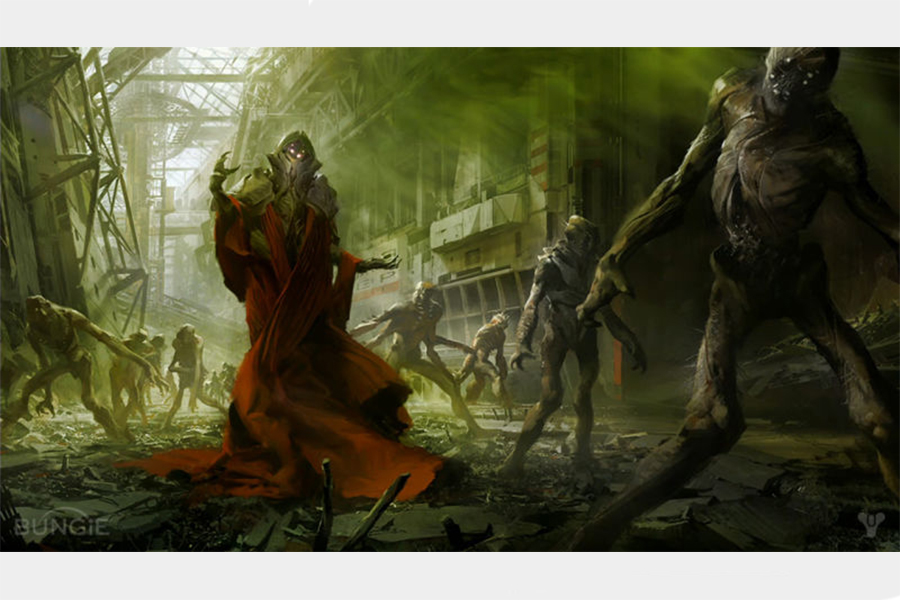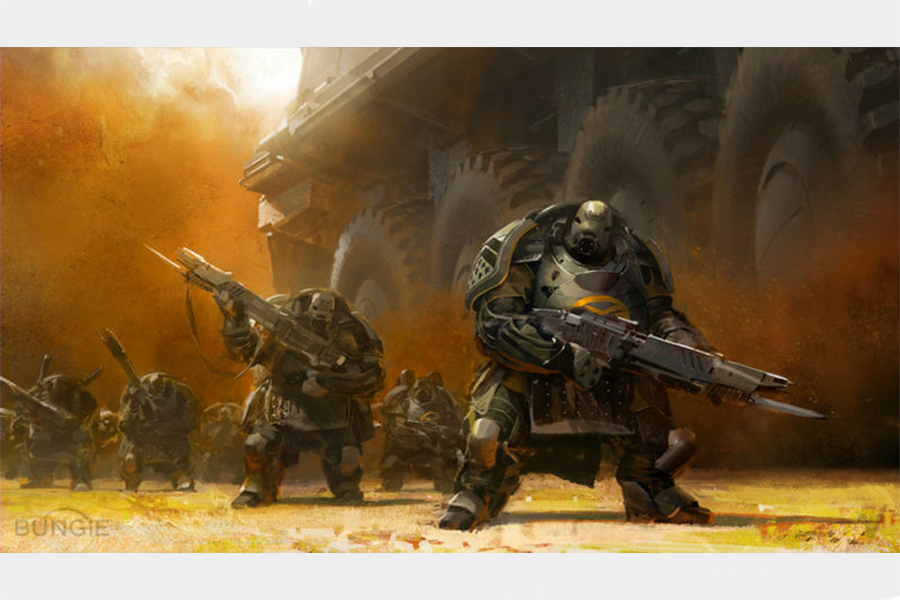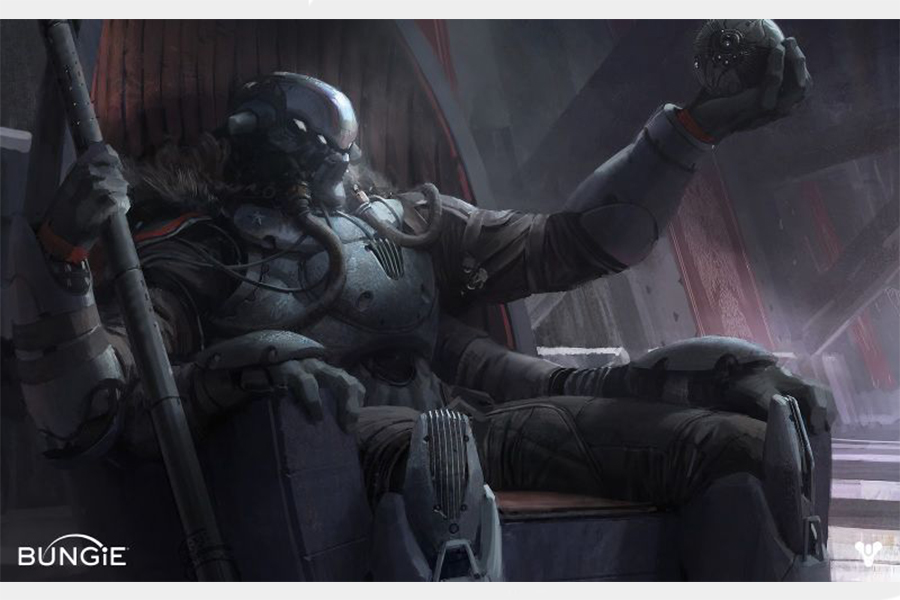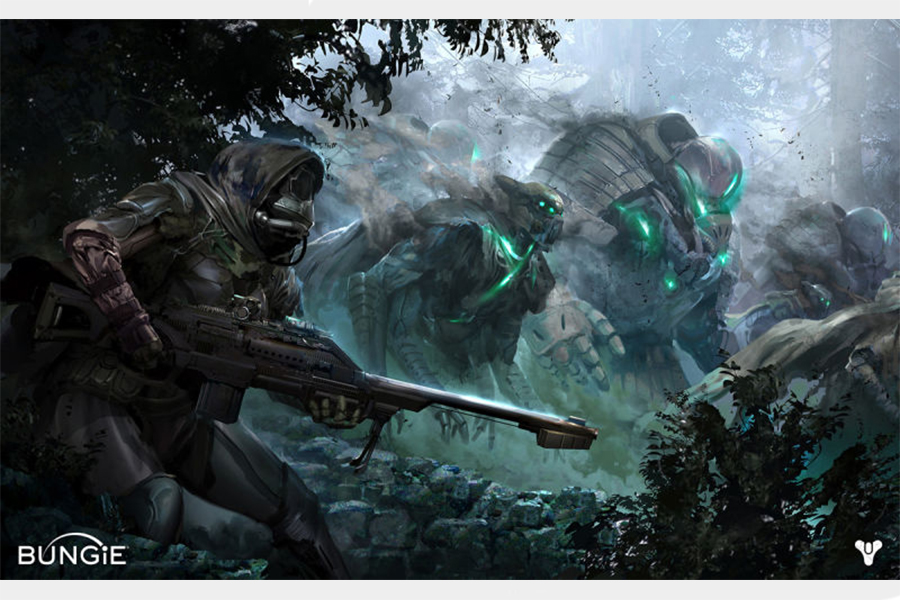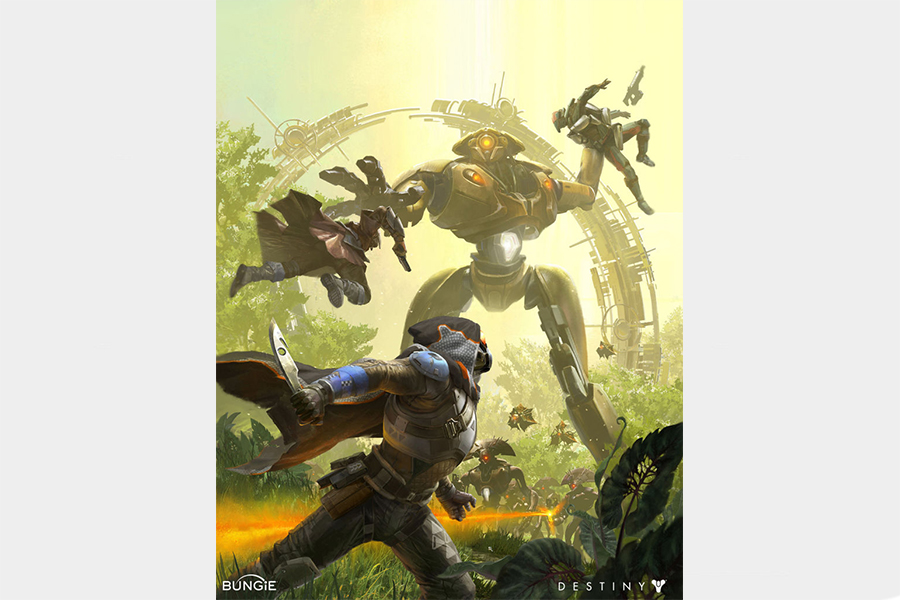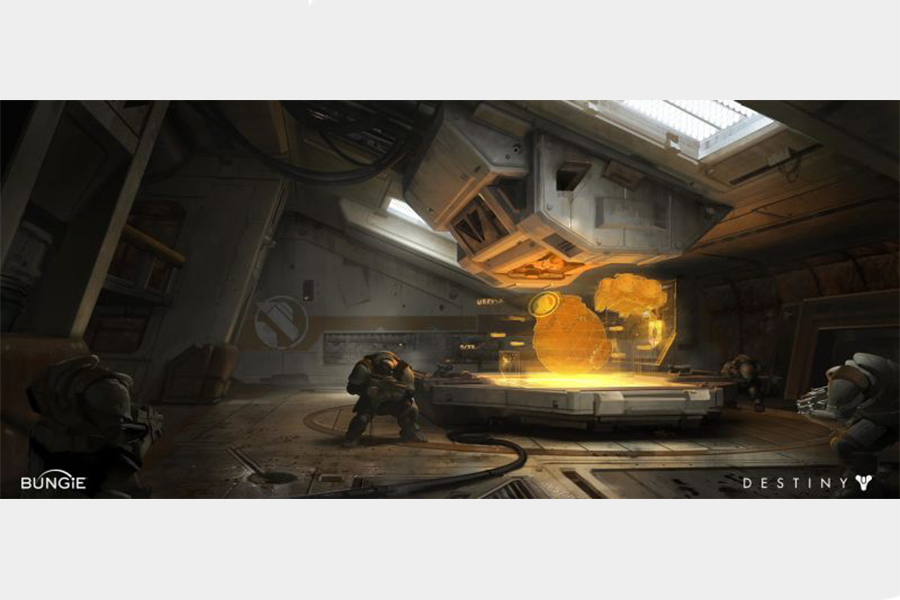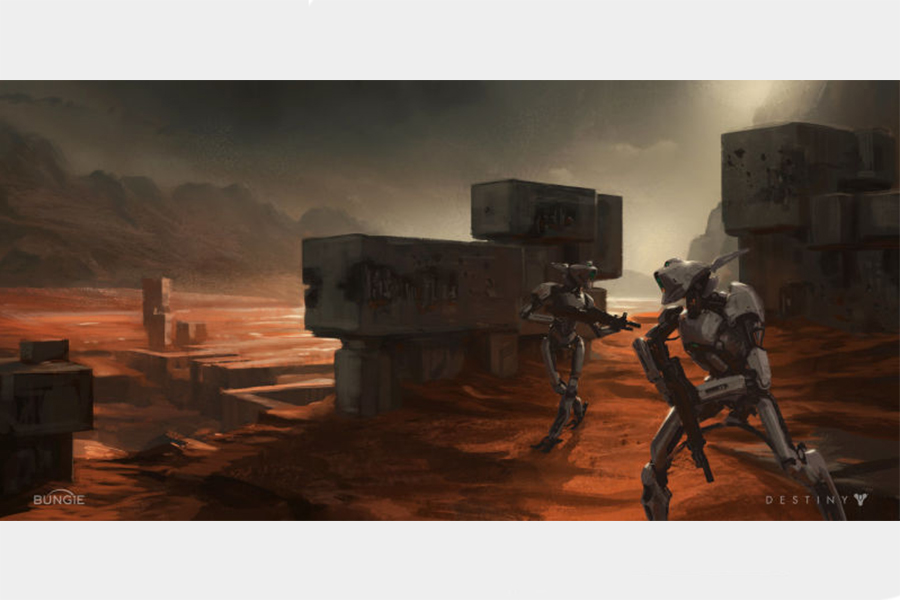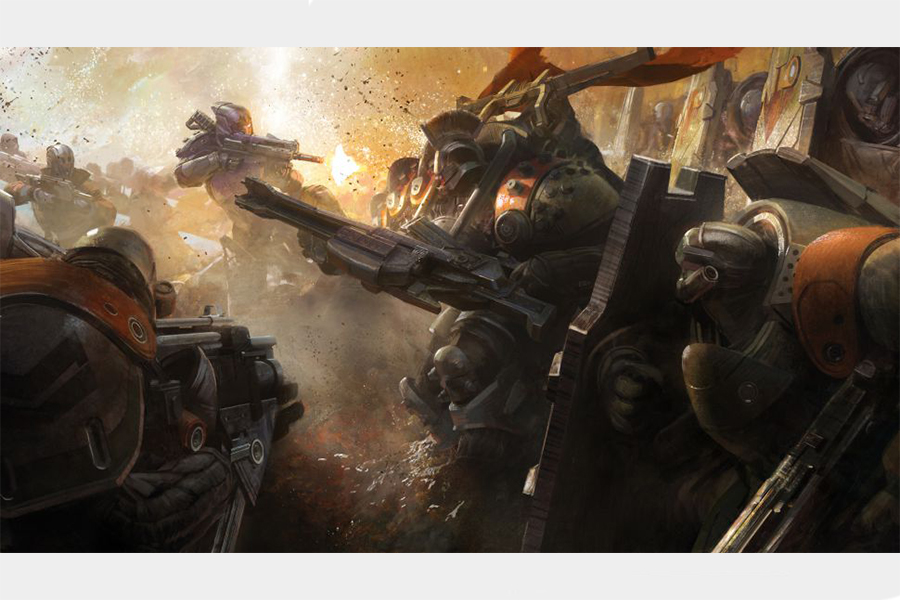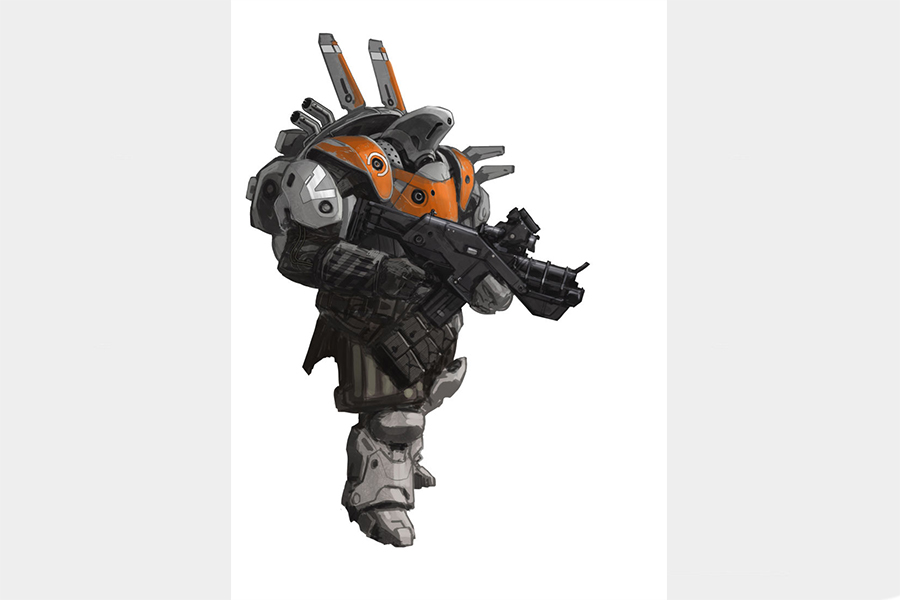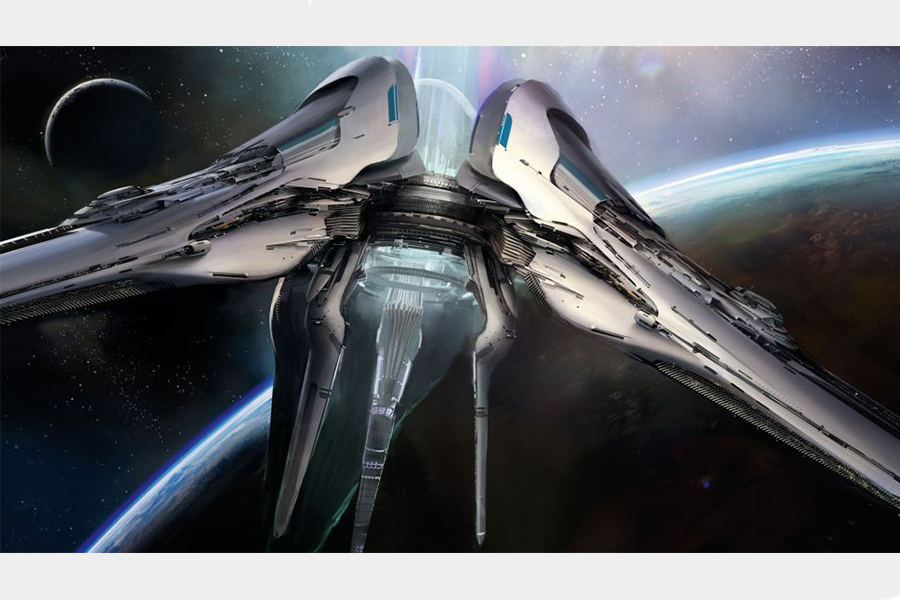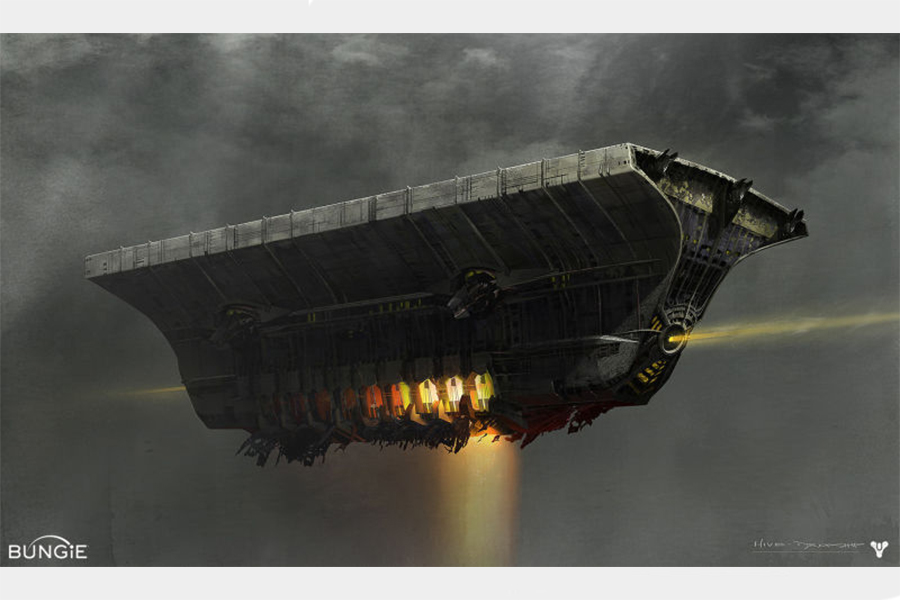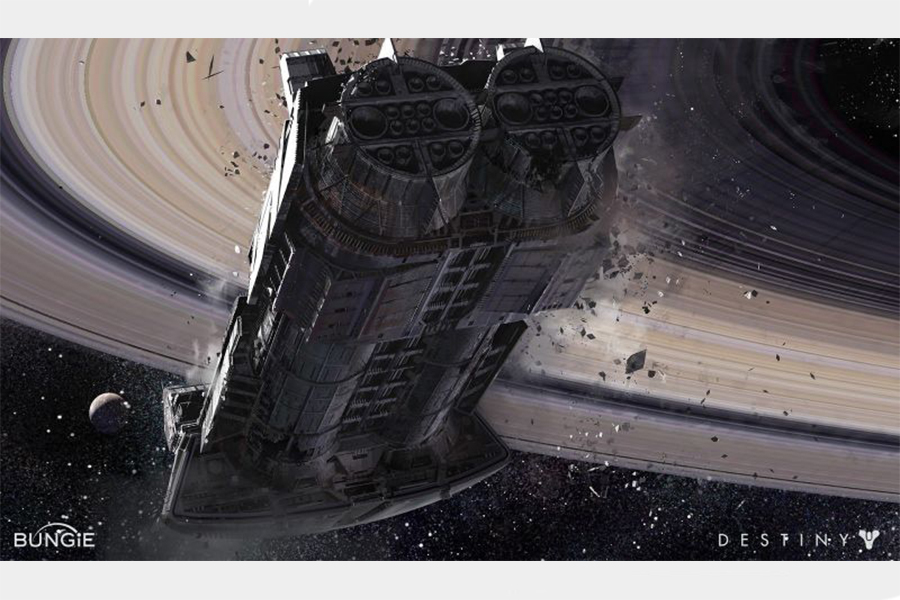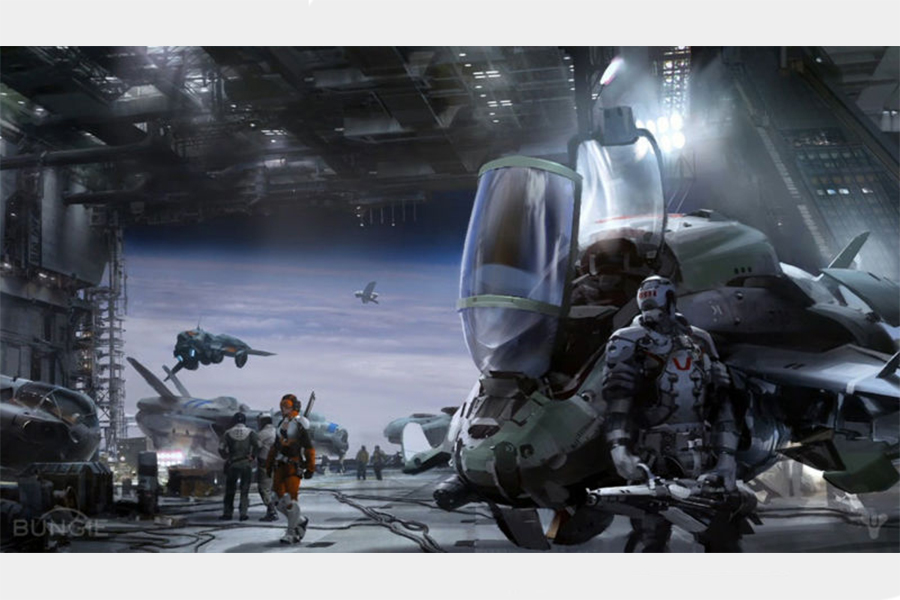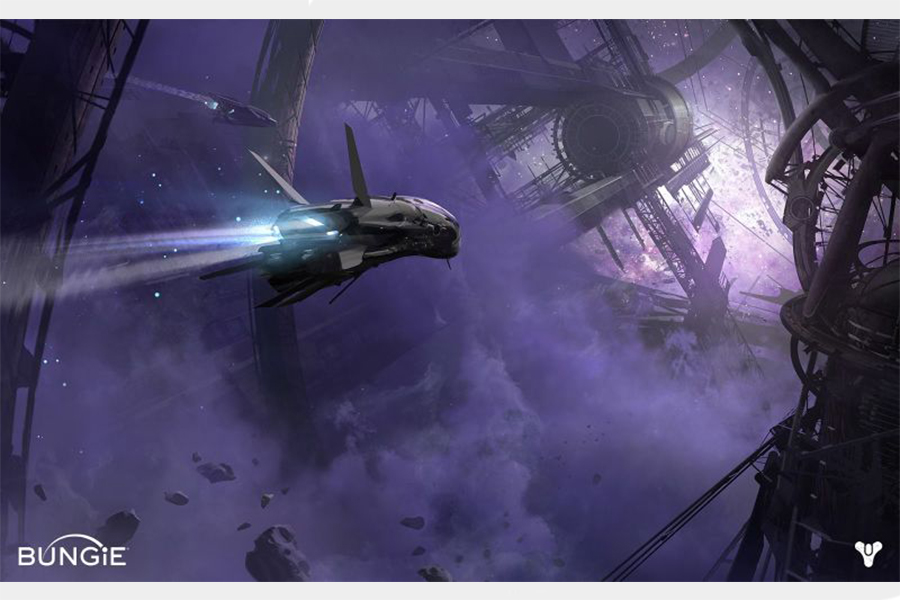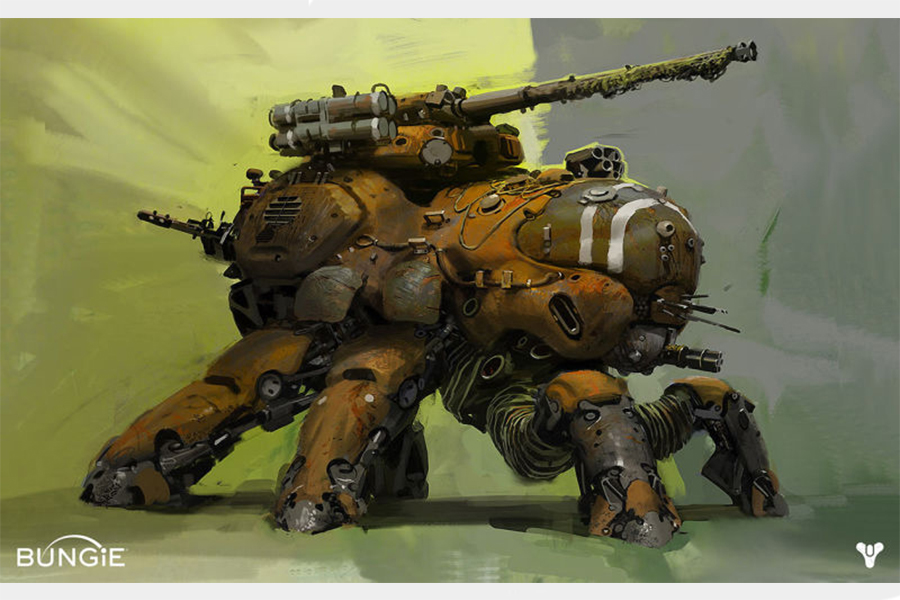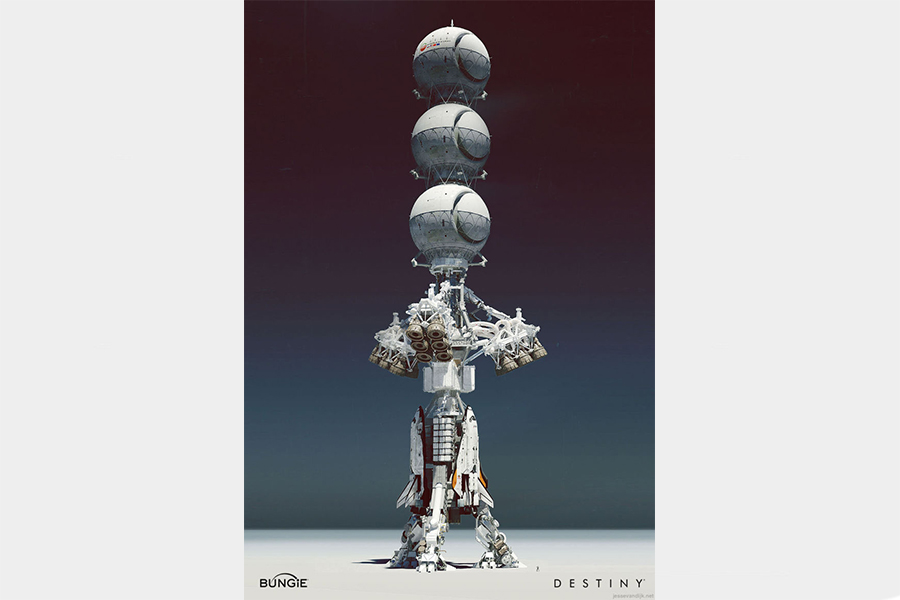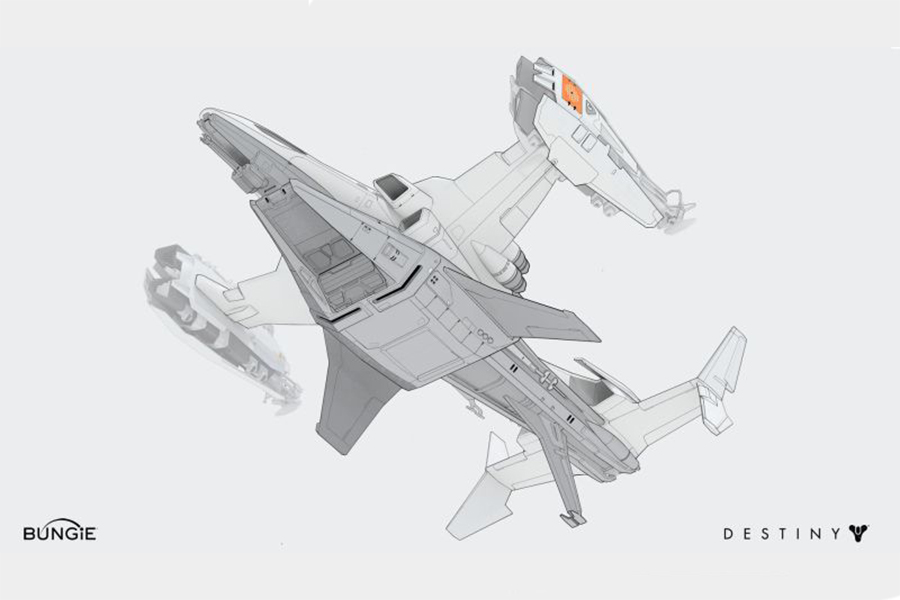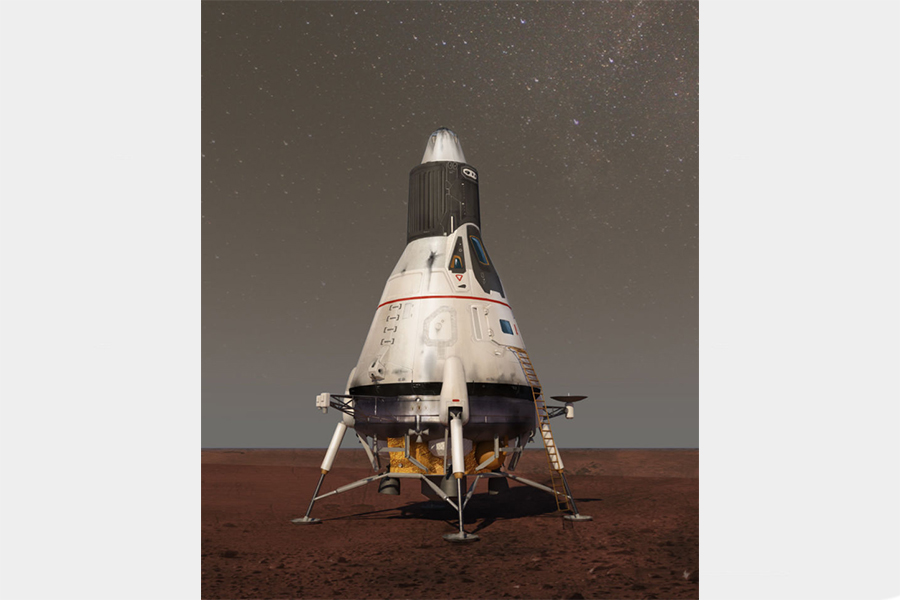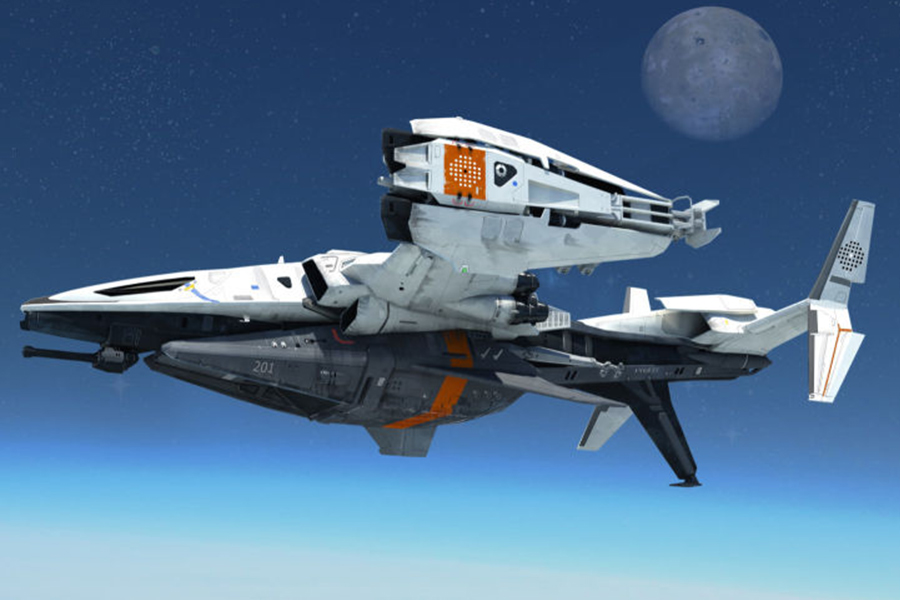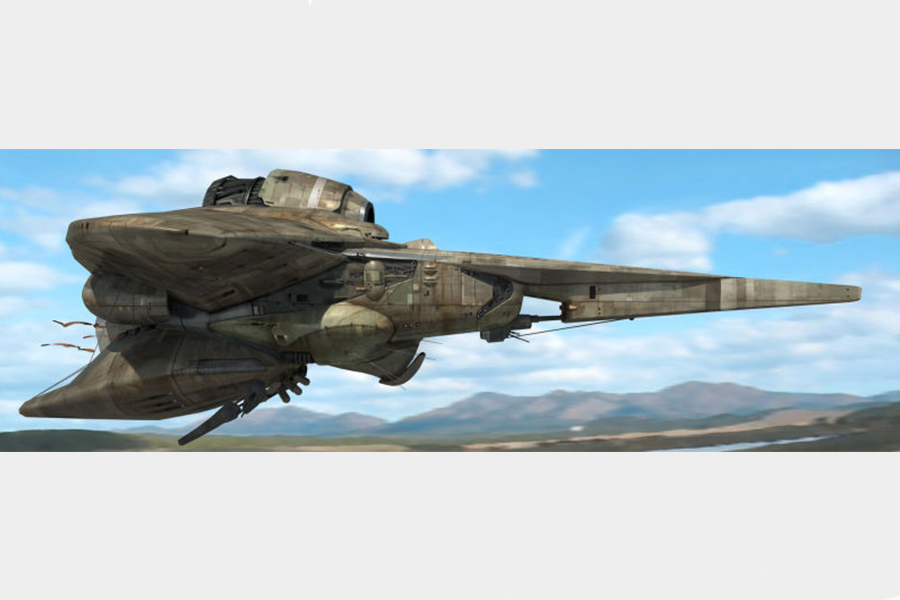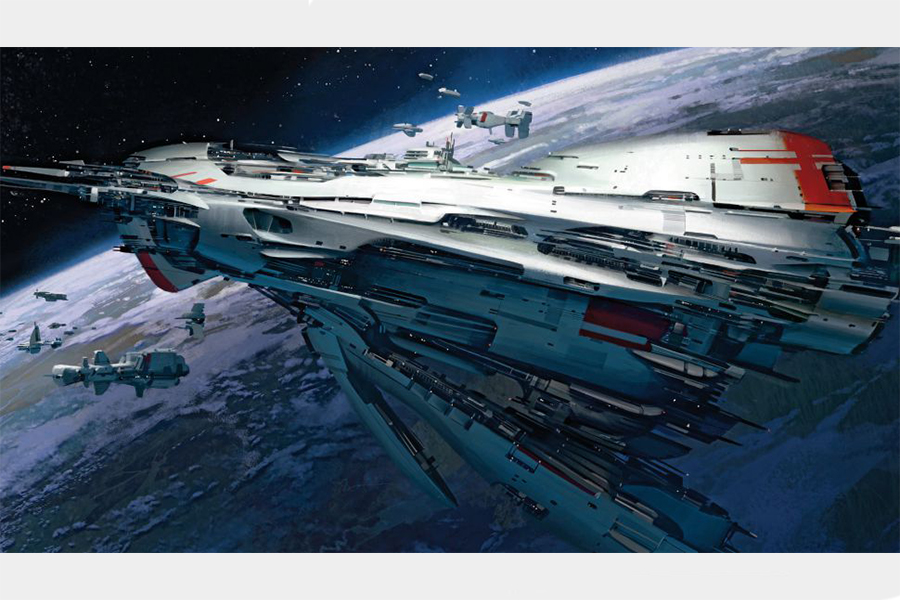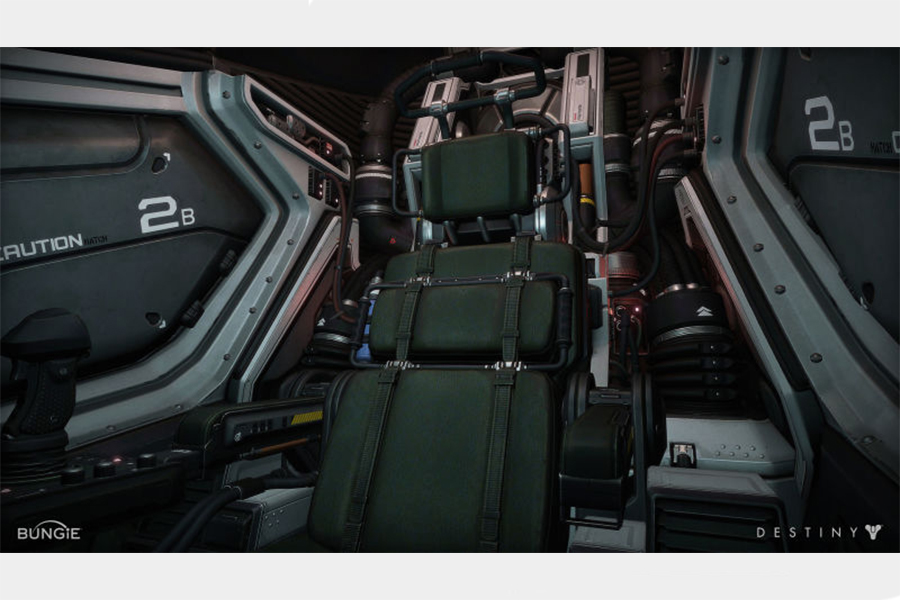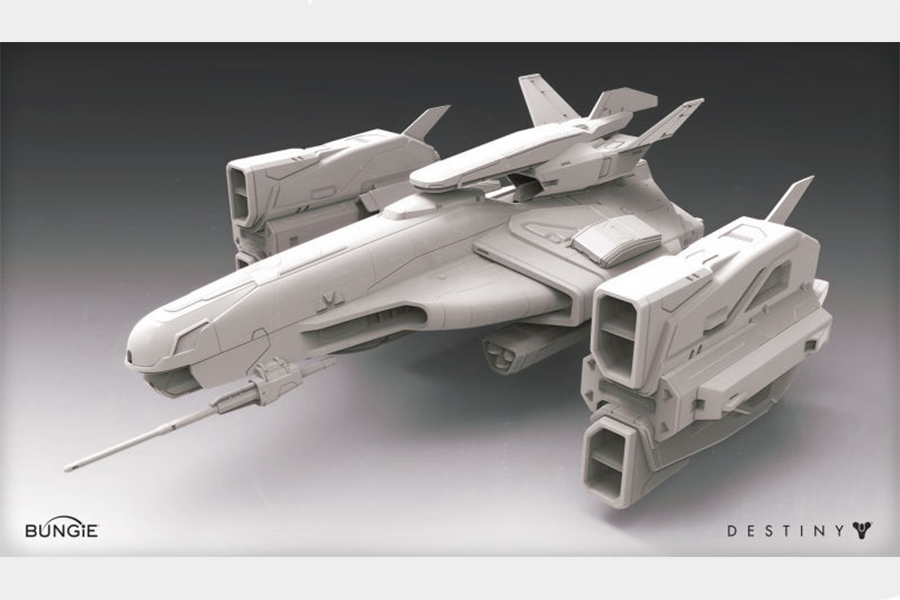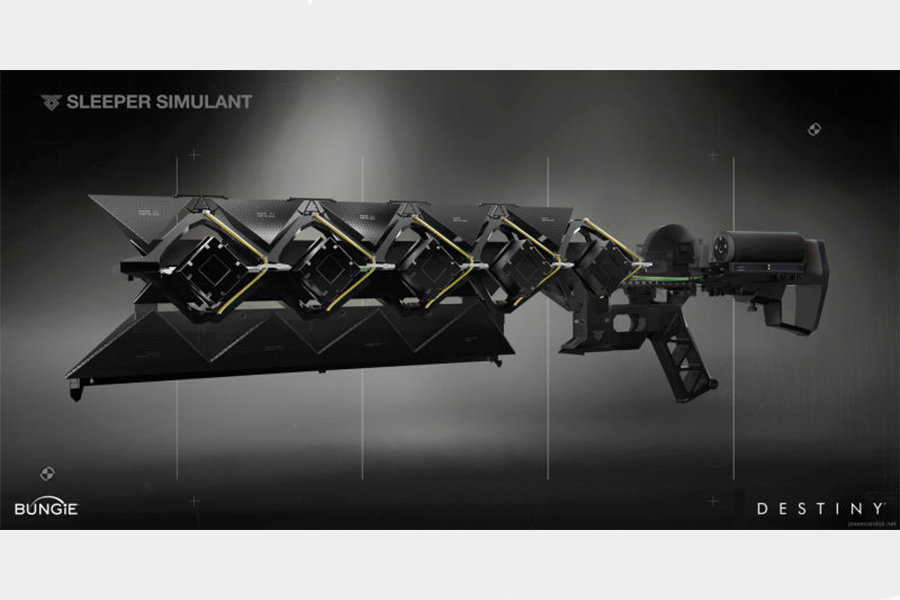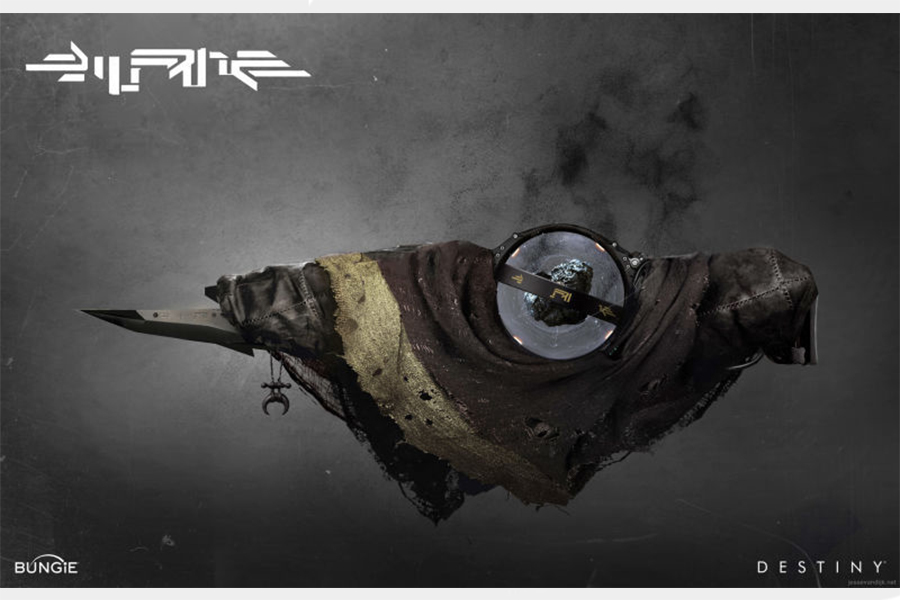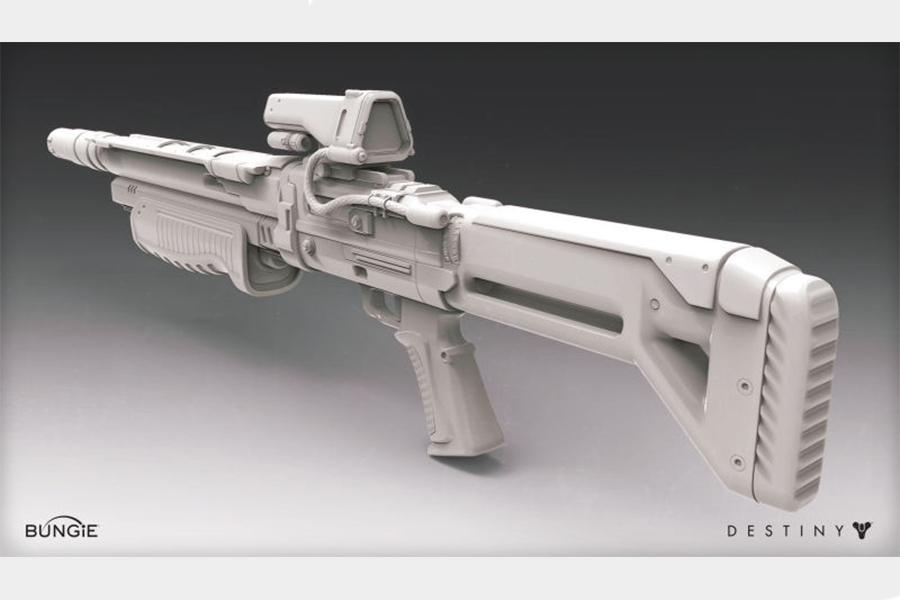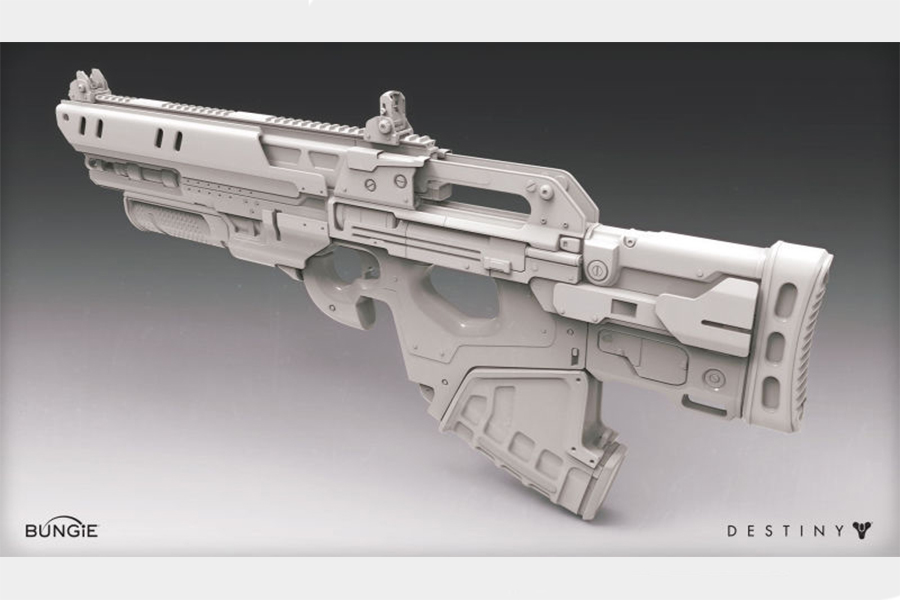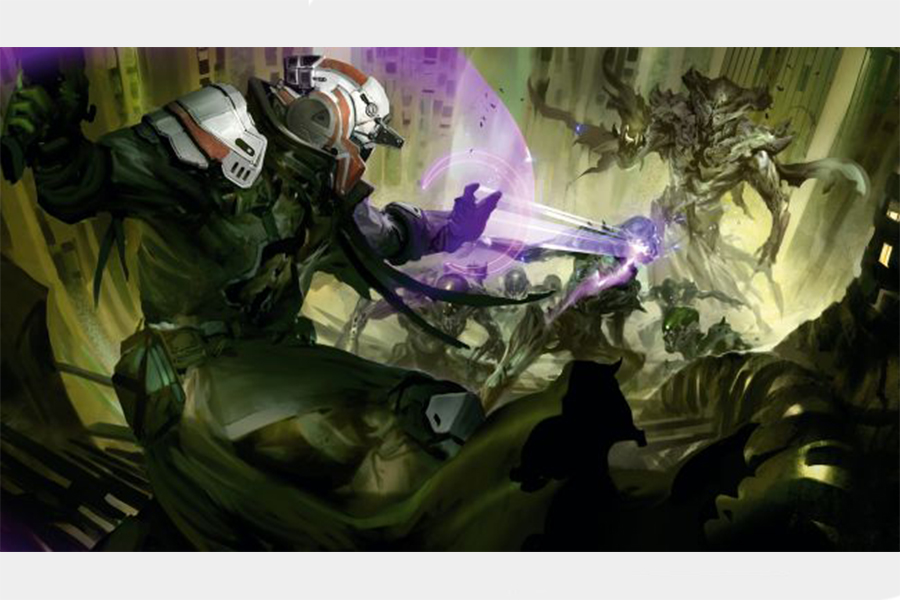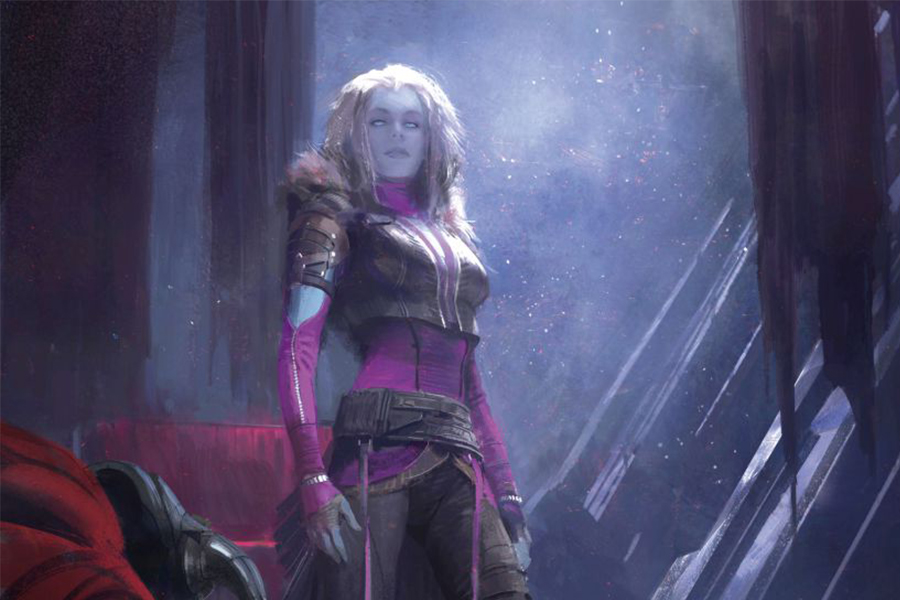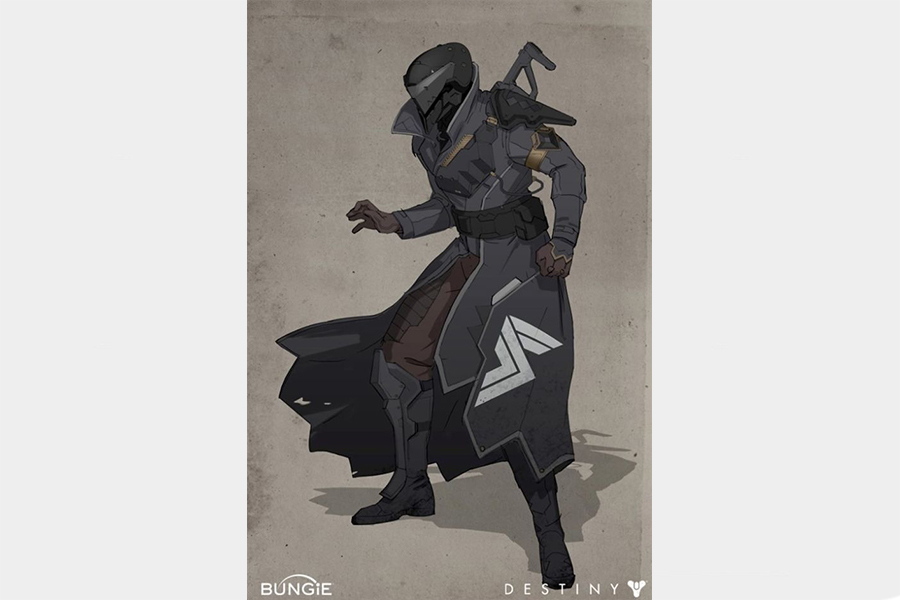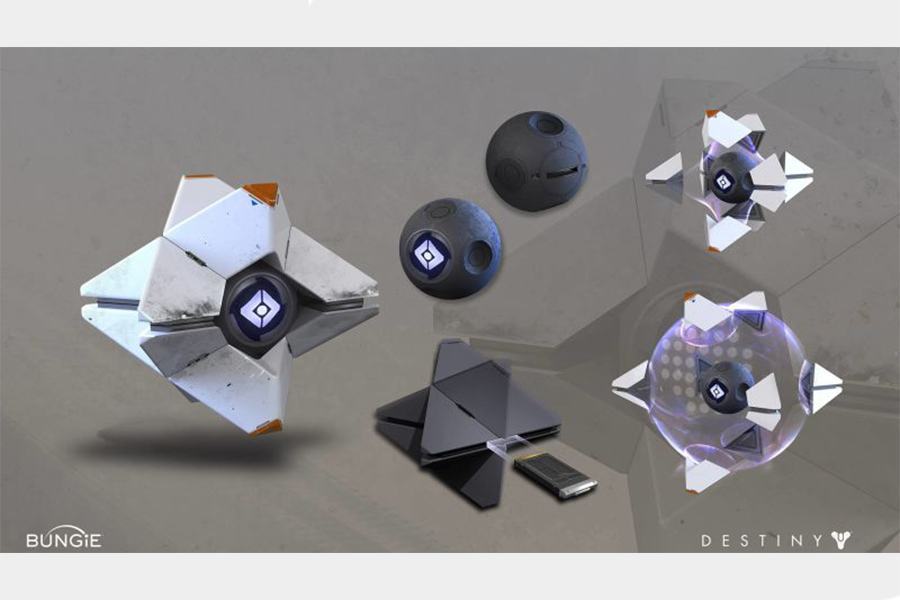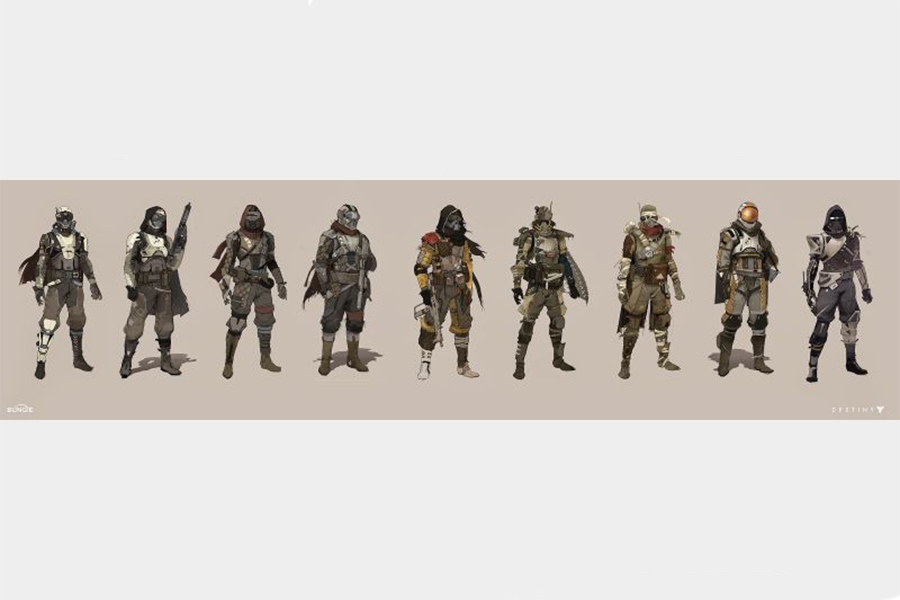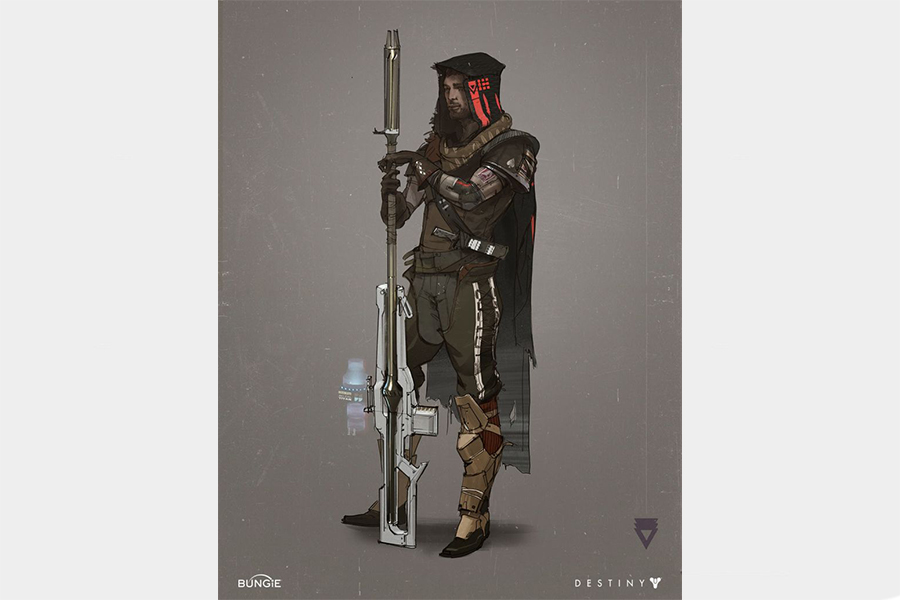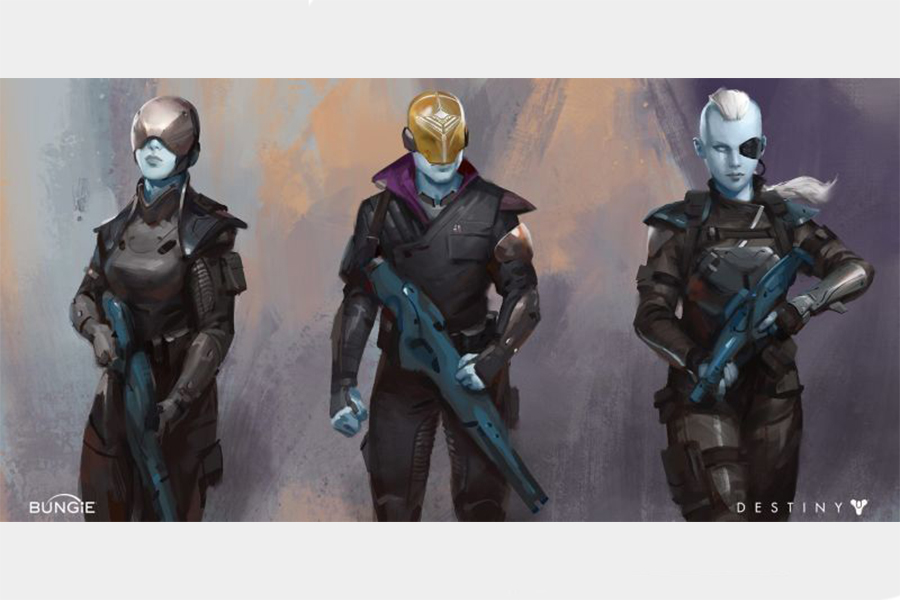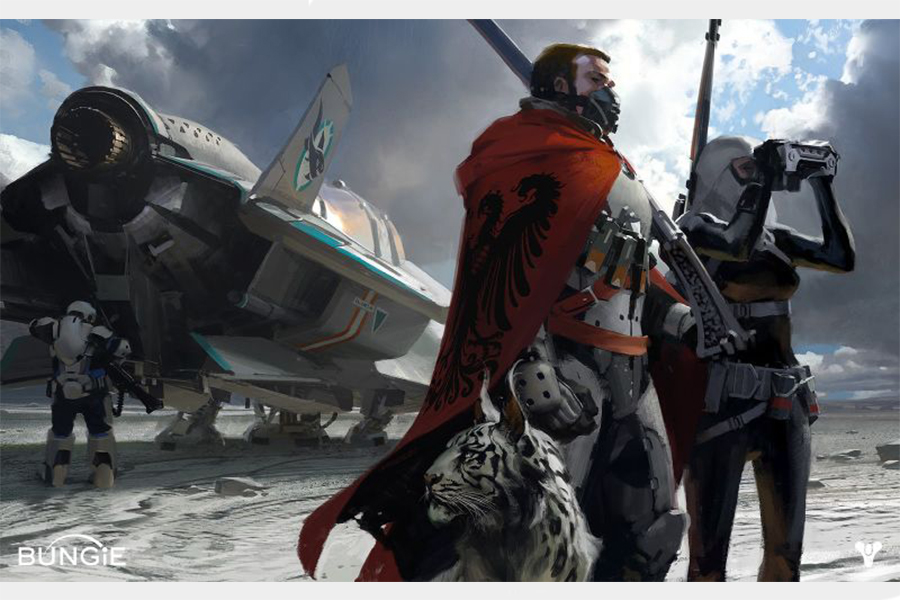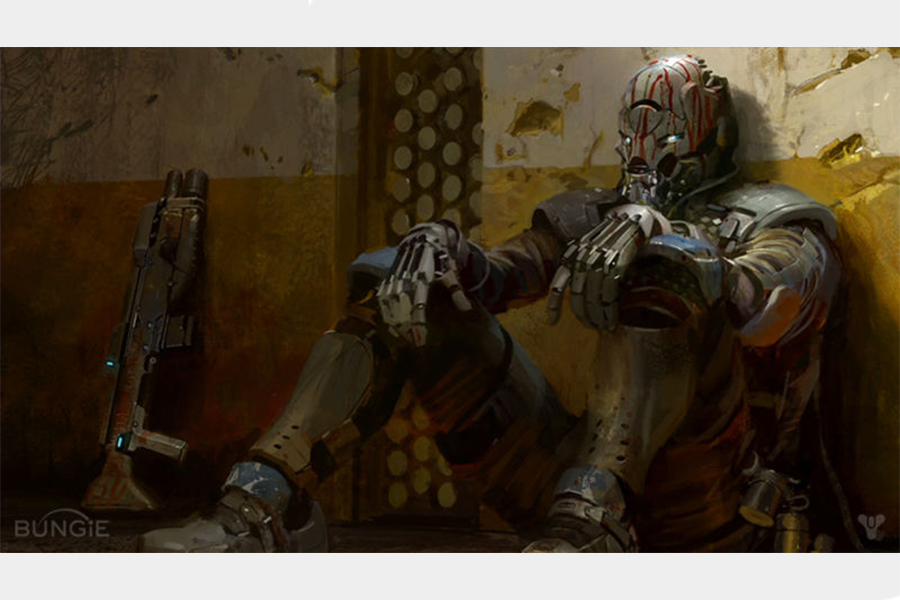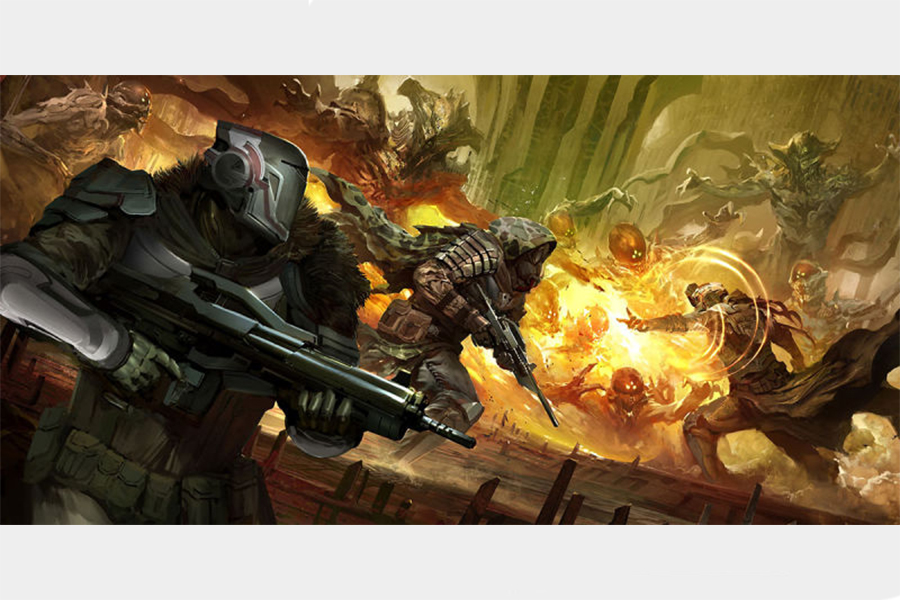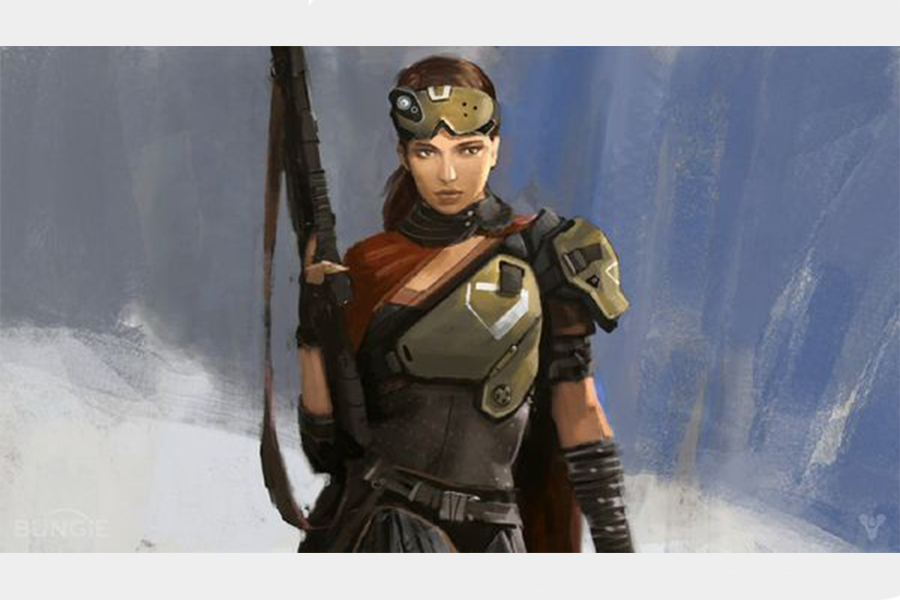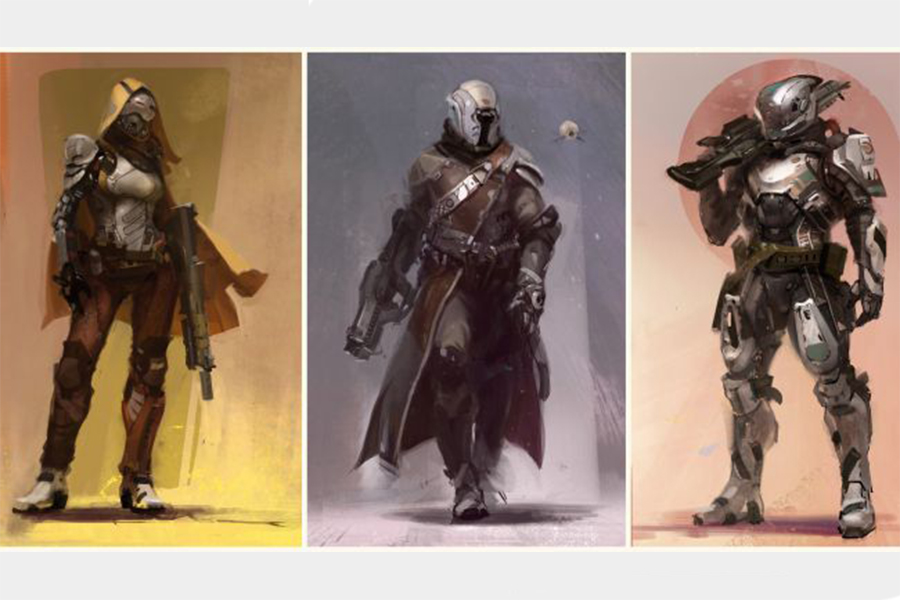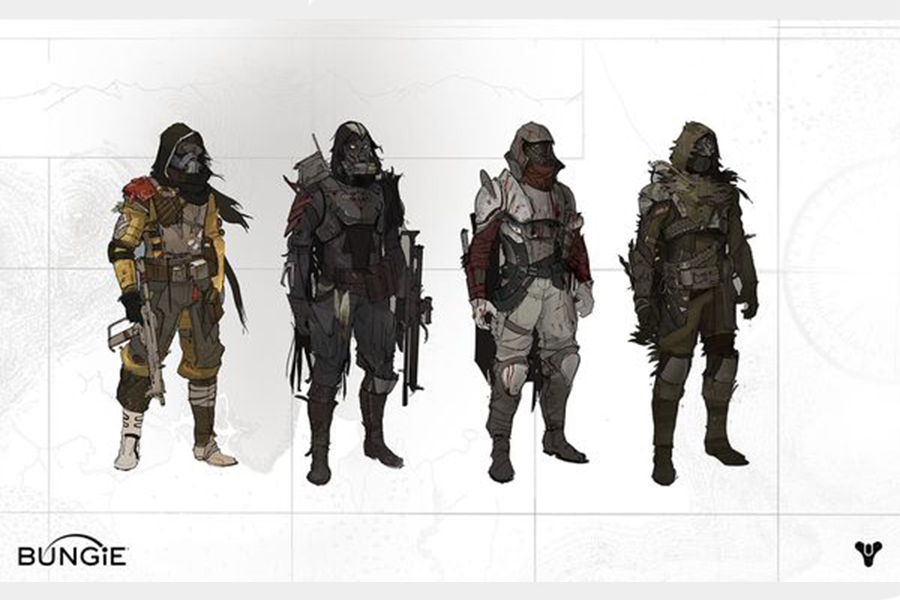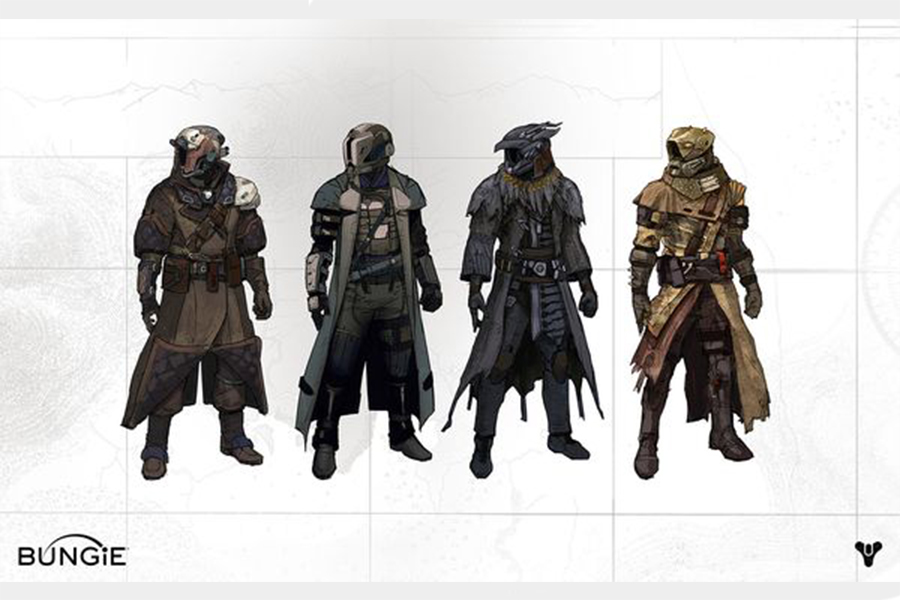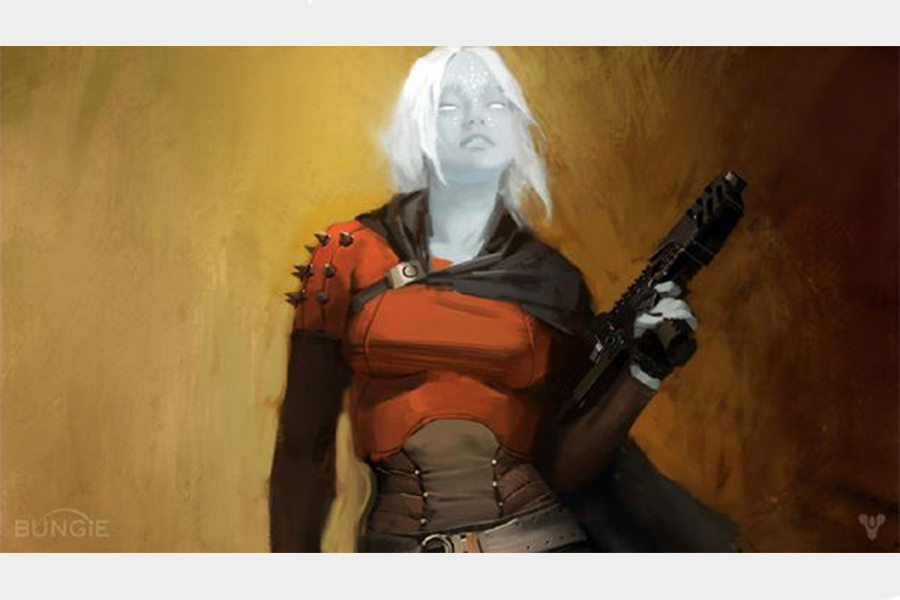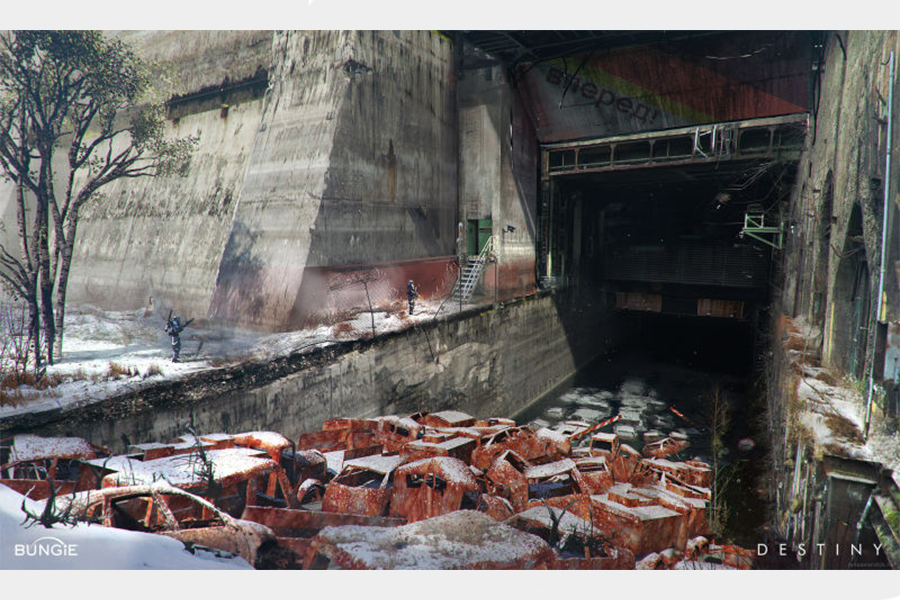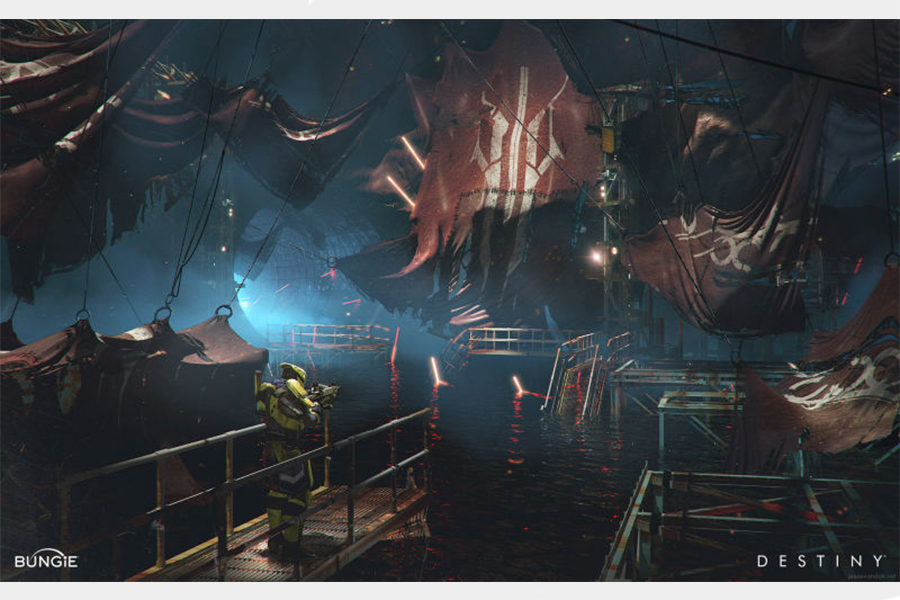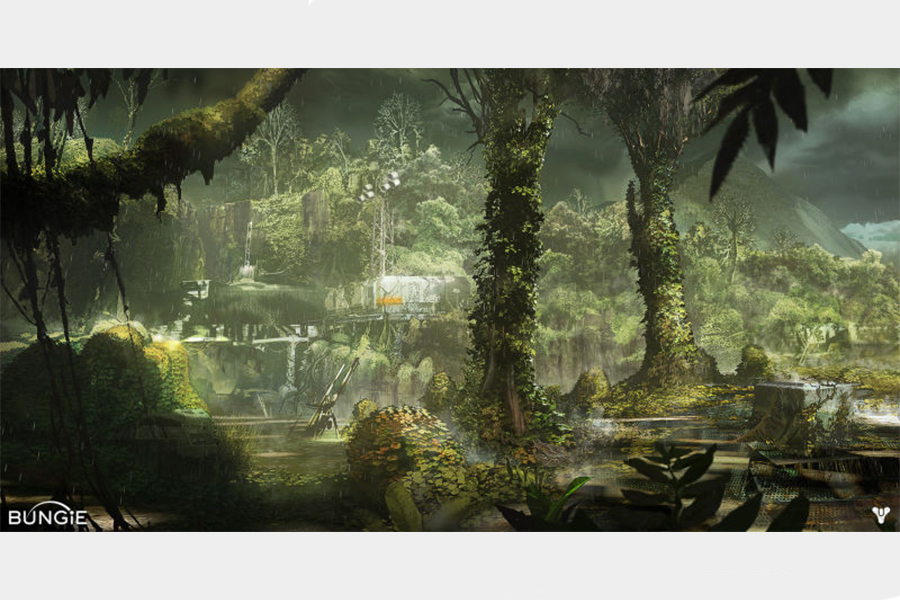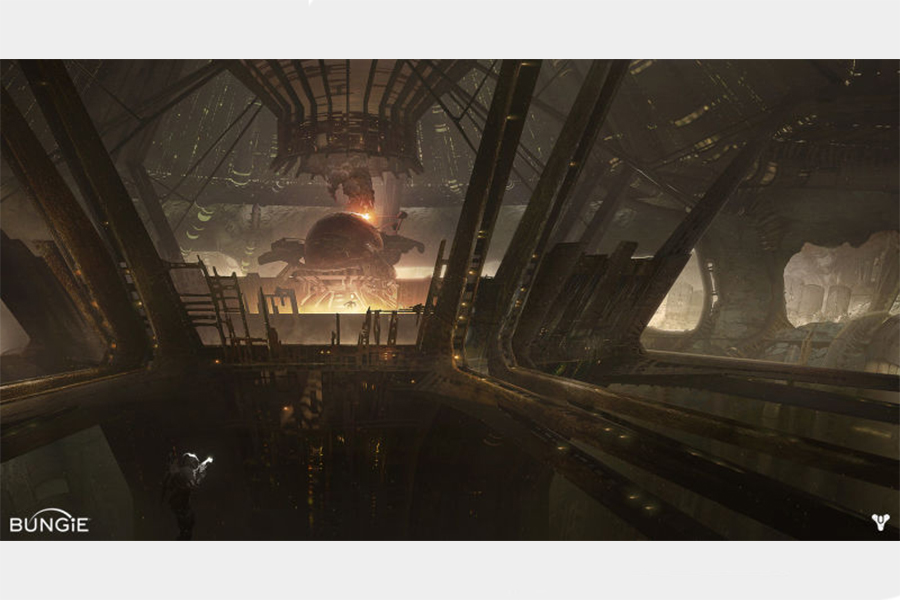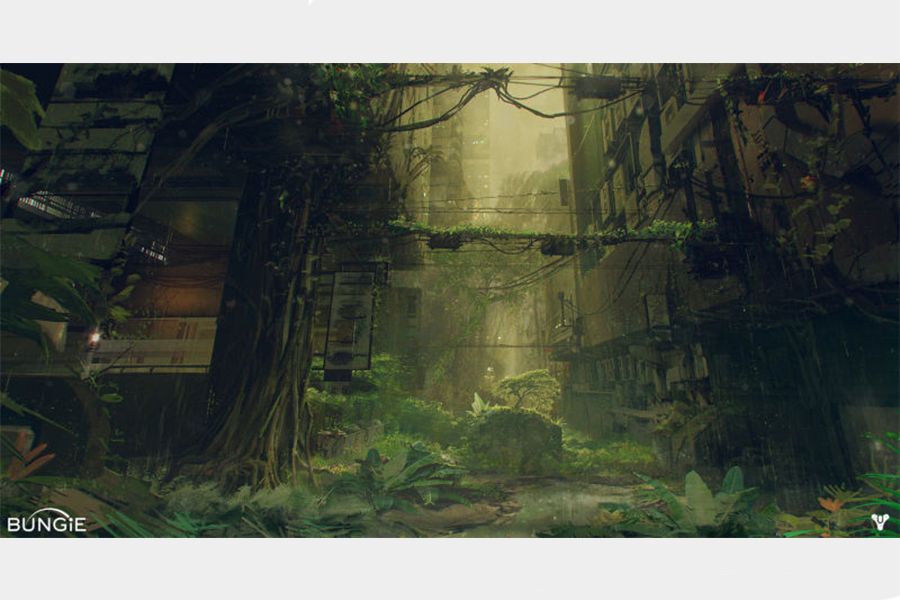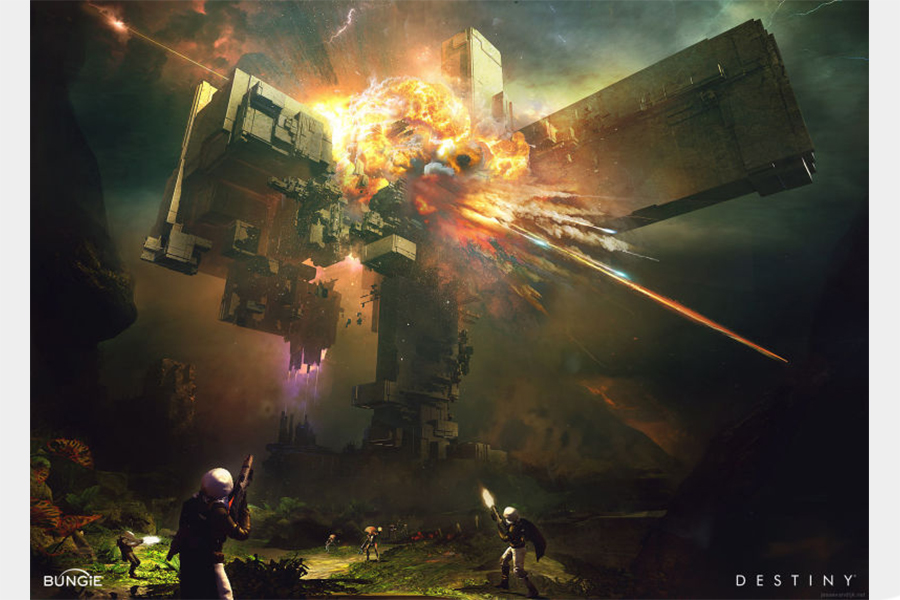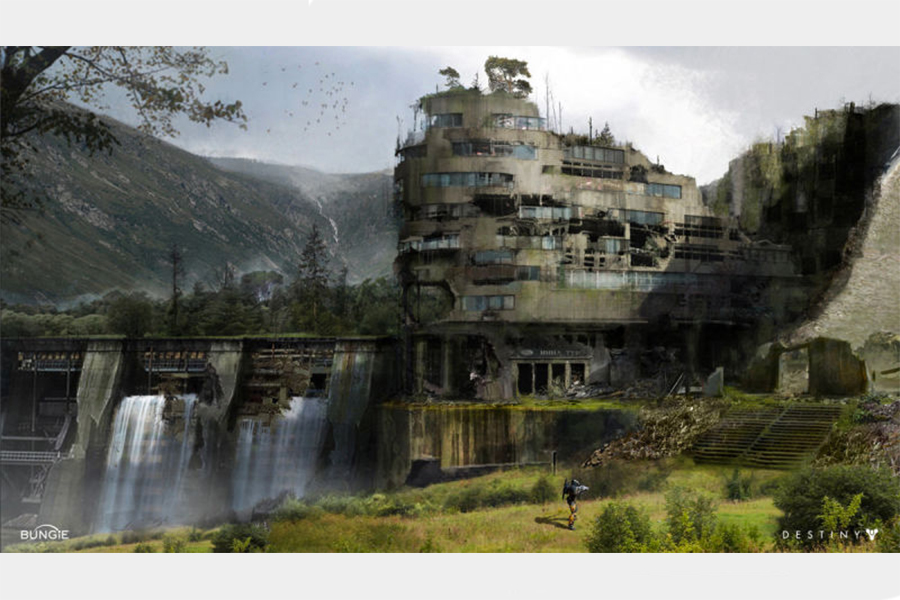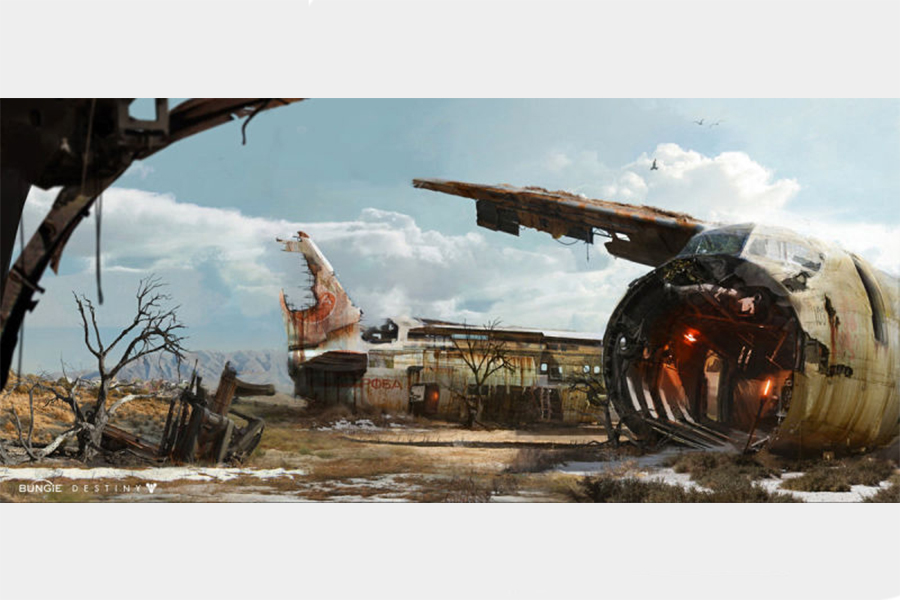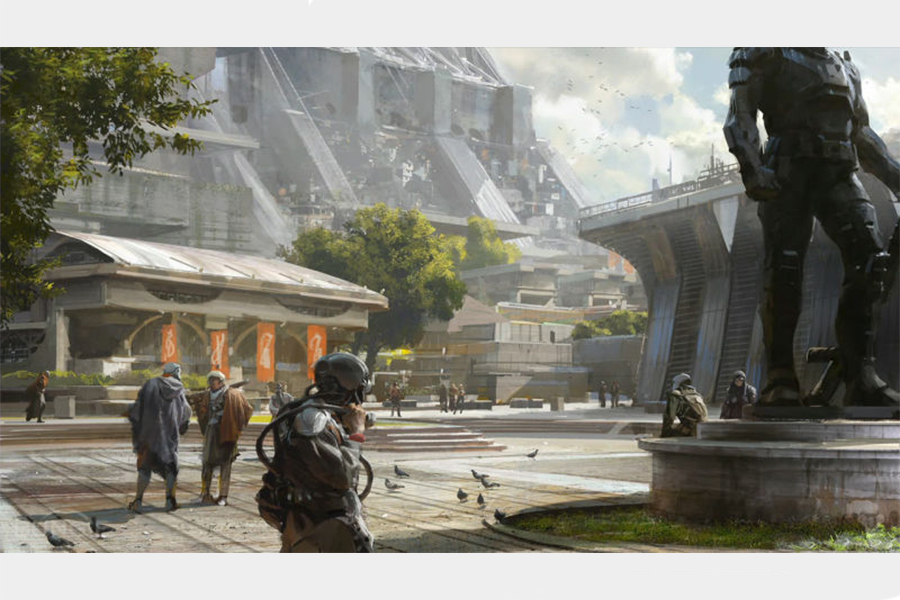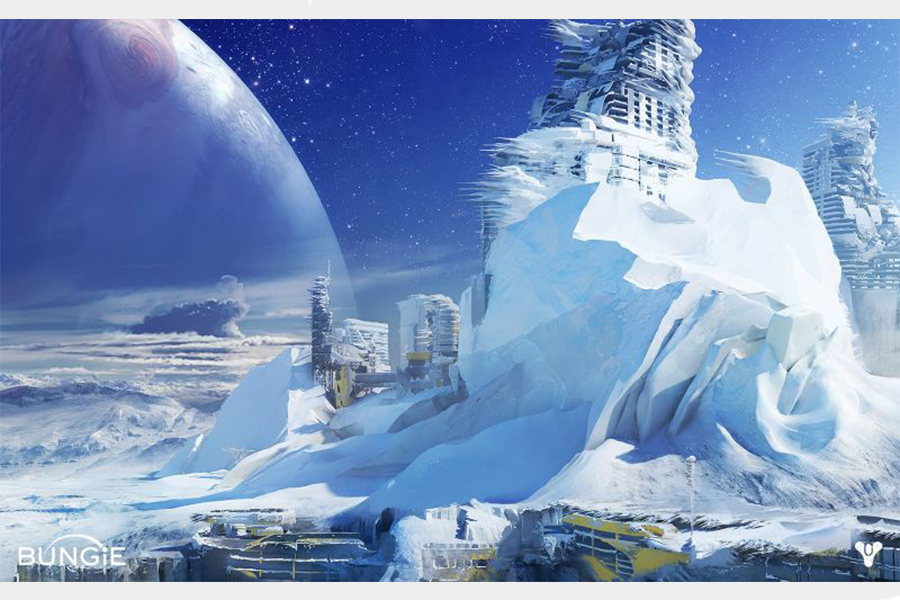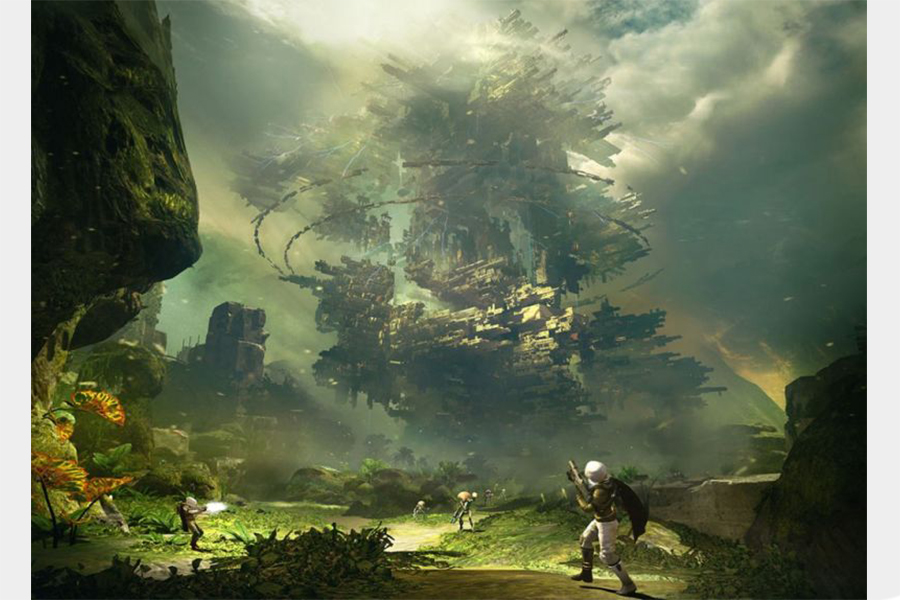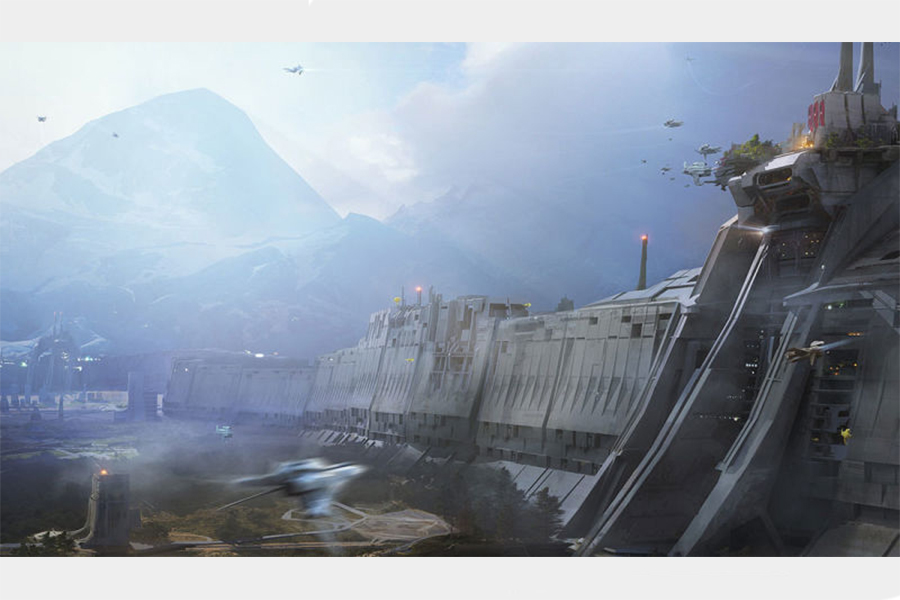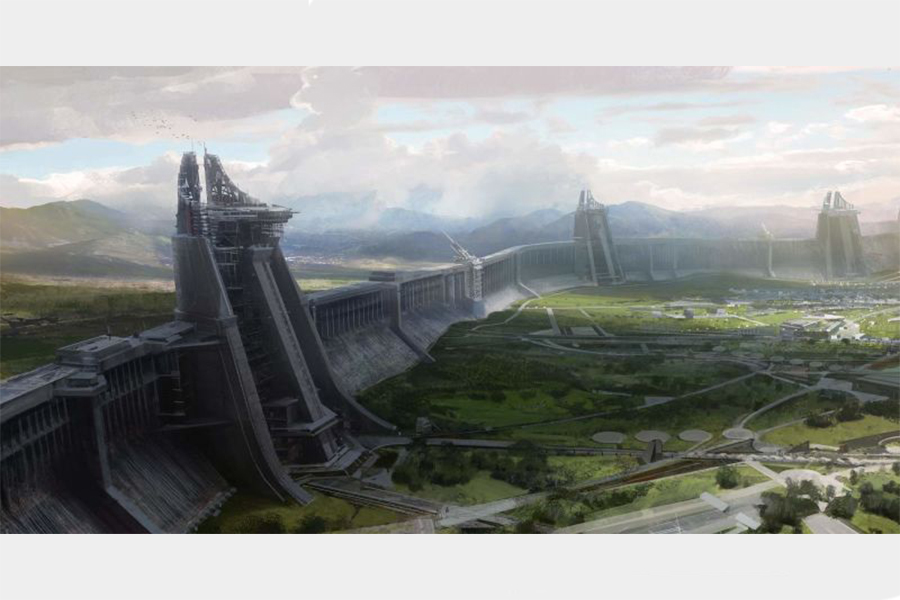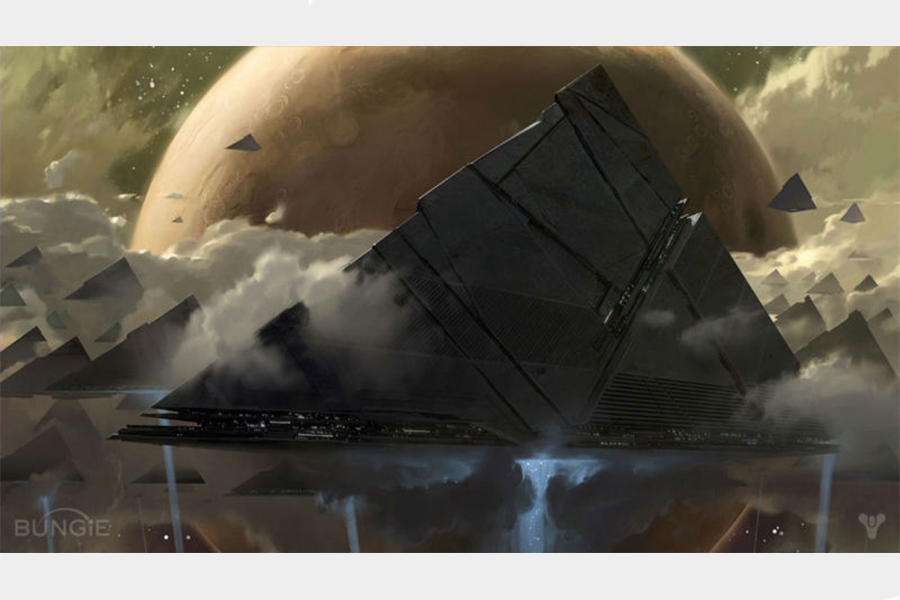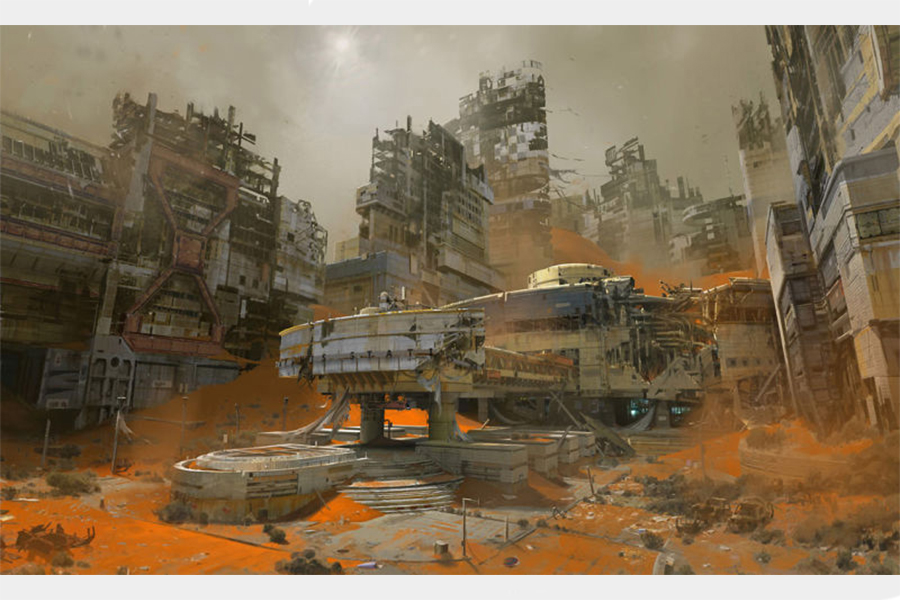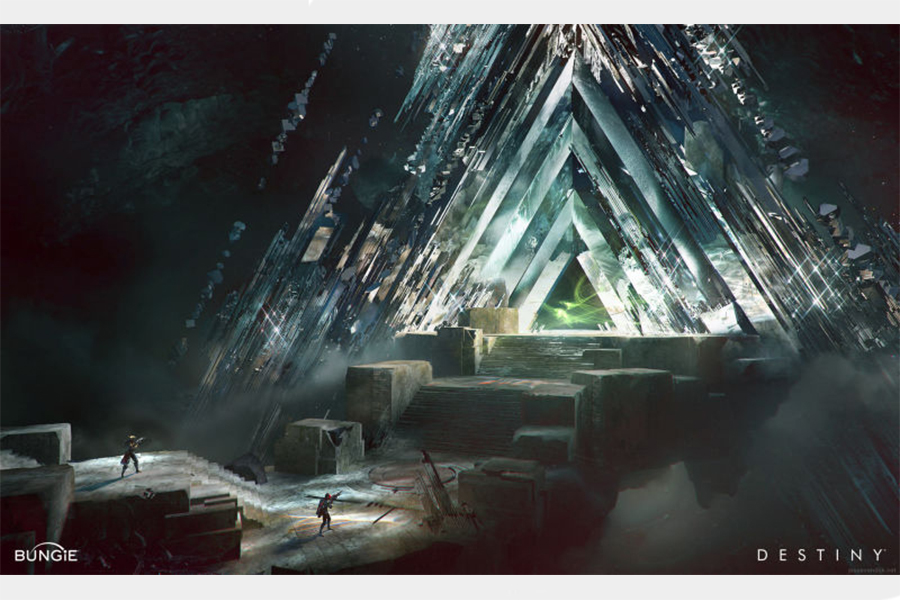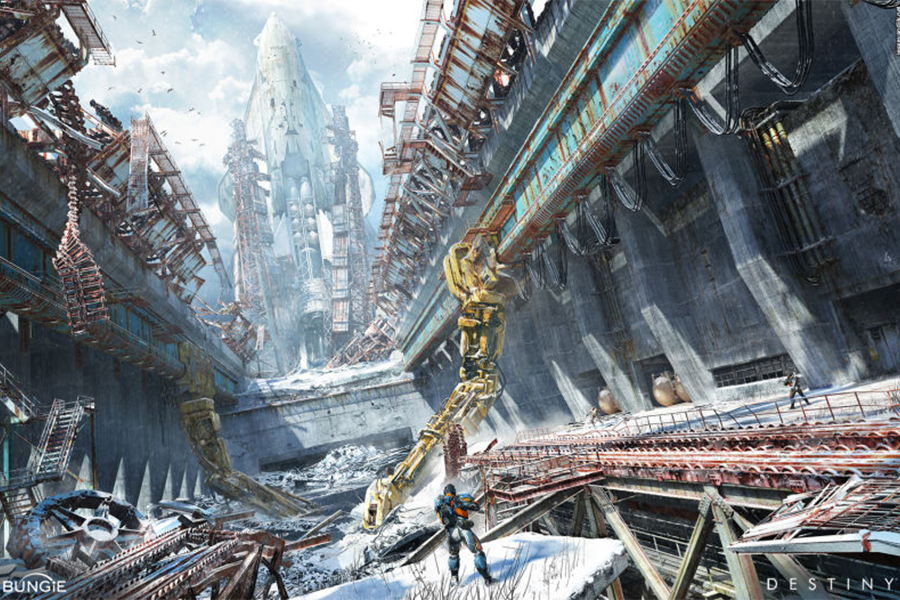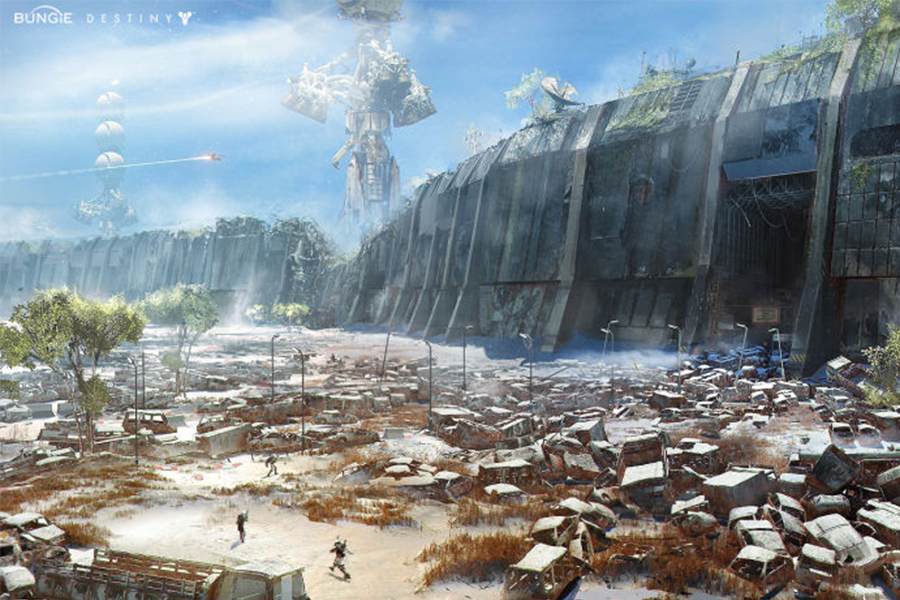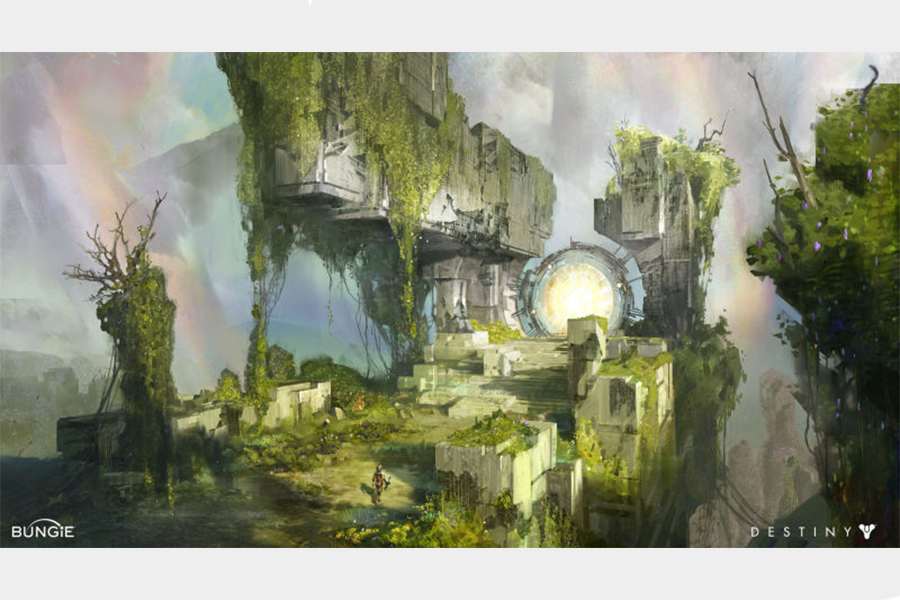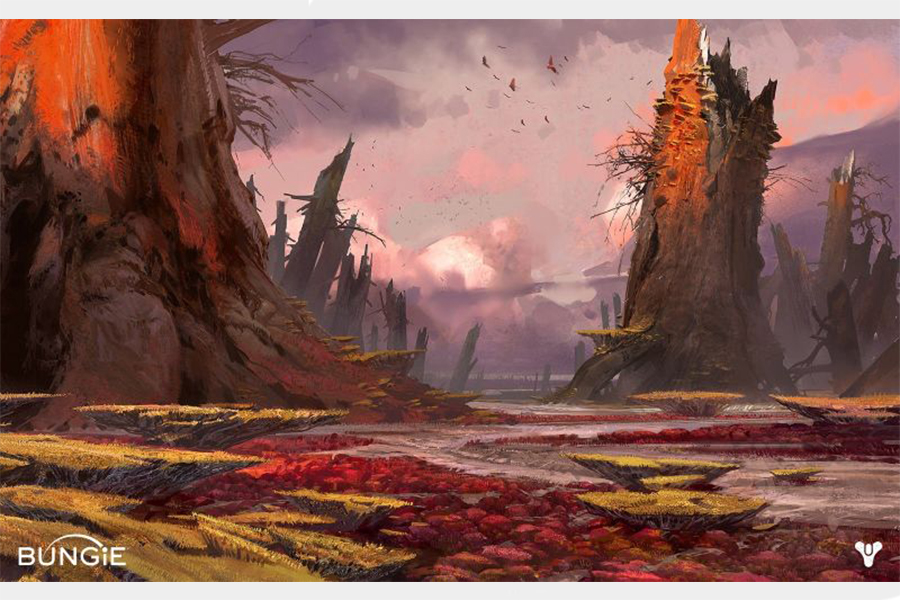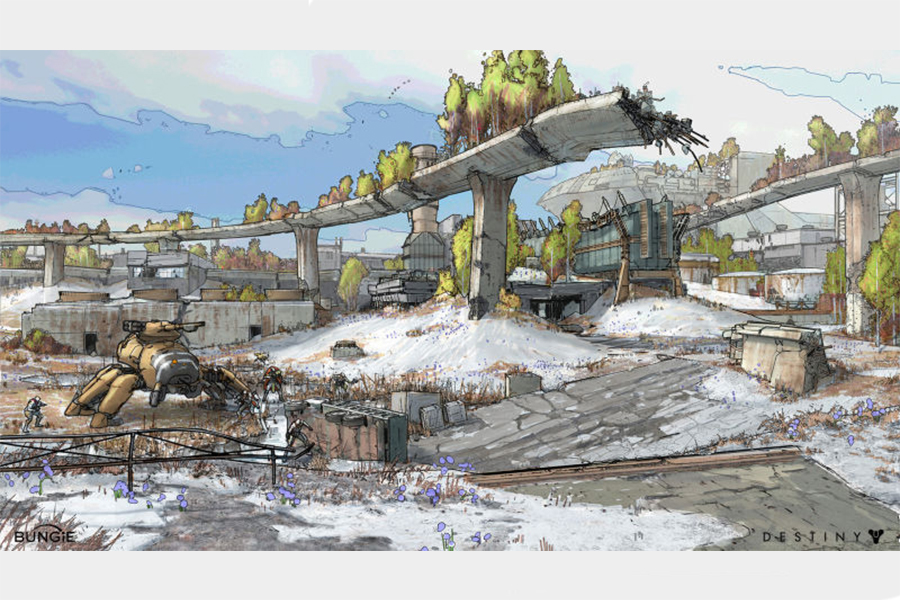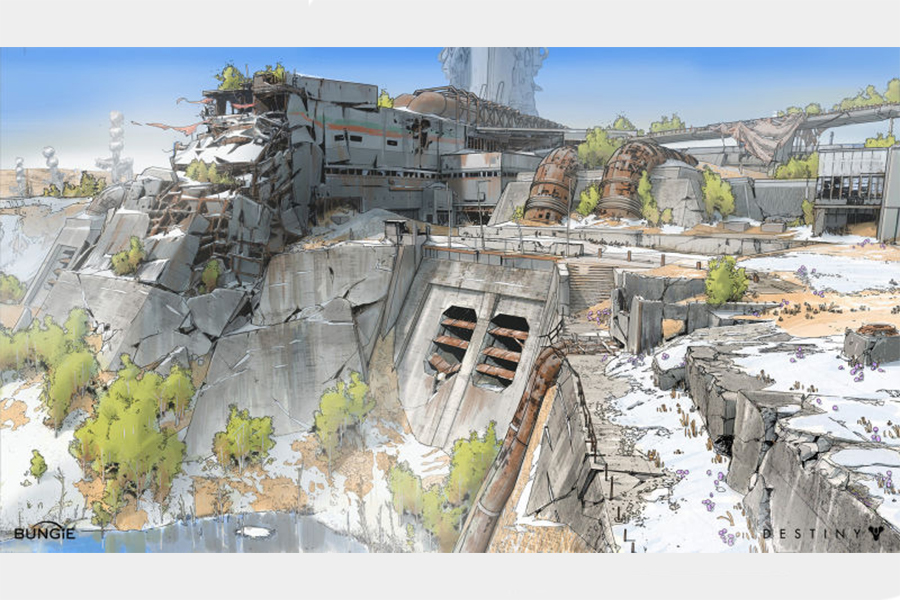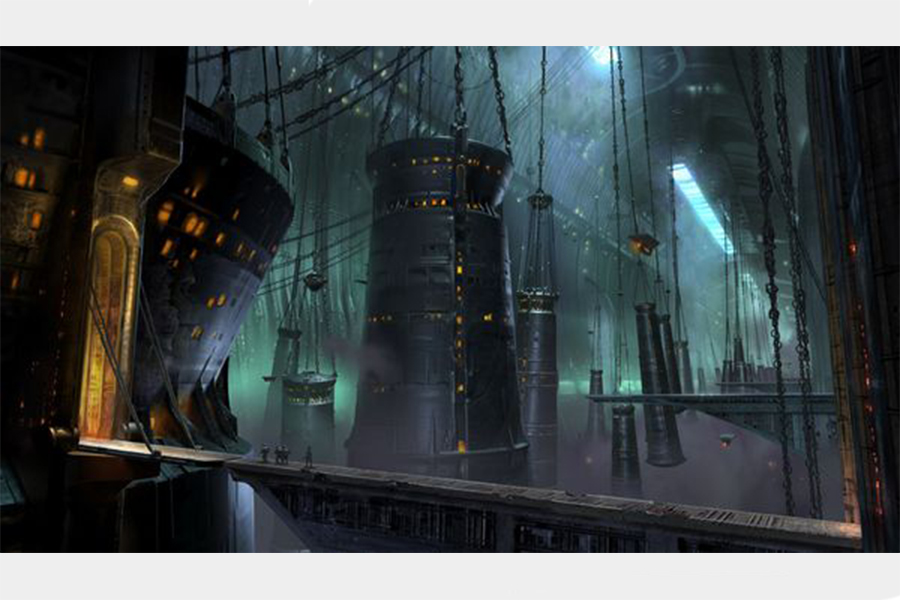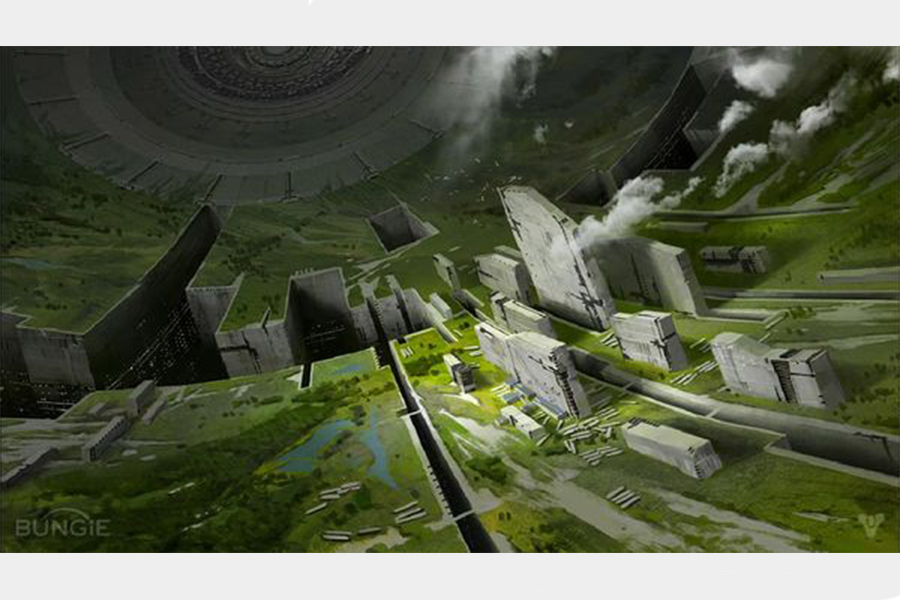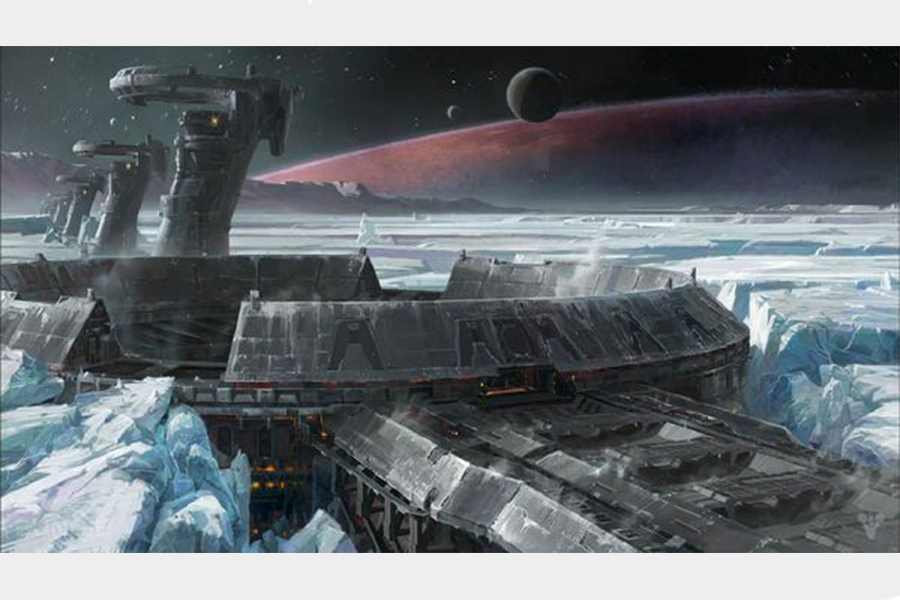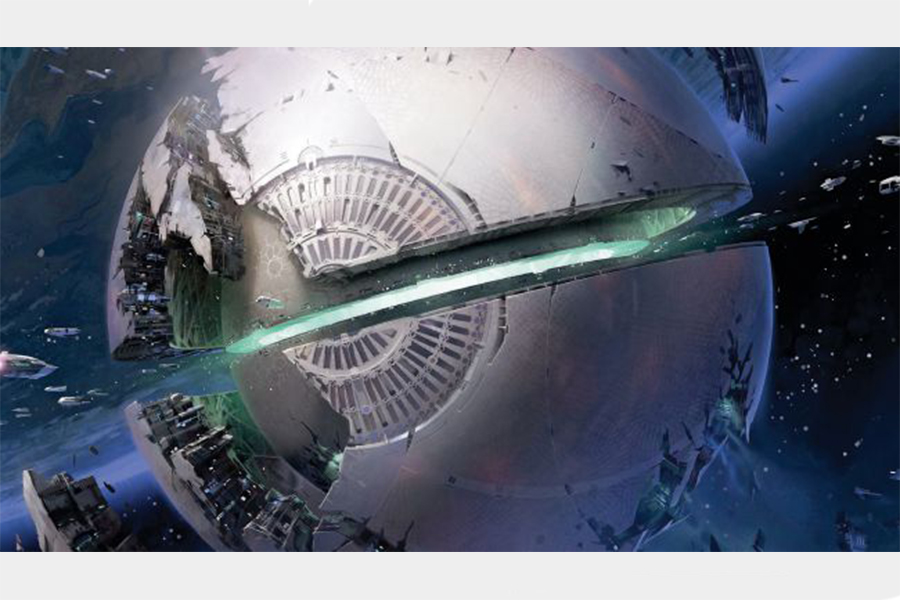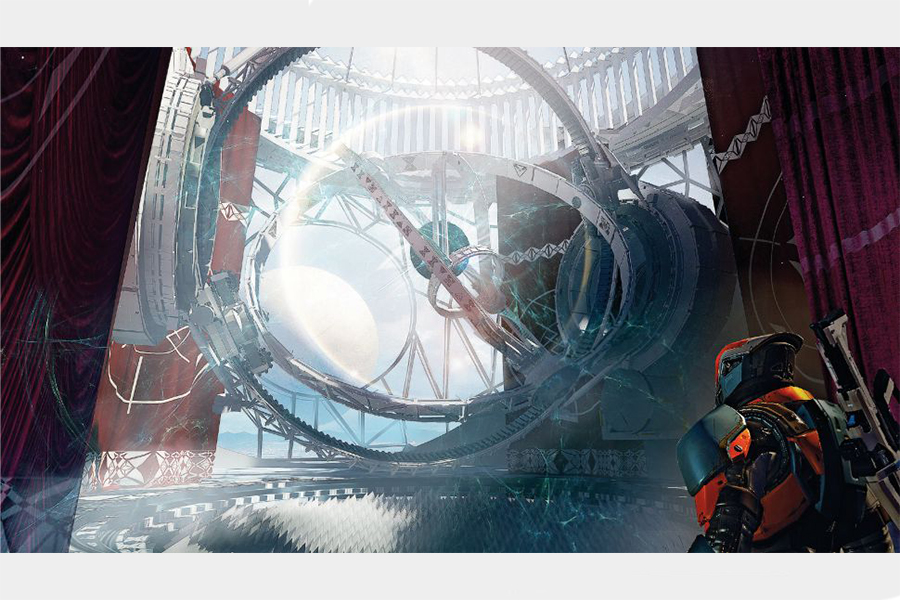
Check out these galleries below to see how much the sci-fi title has evolved since its initial inception nearly seven years ago. Needless to say, the game we’re playing now is not exactly what the folks at Bungie first envisioned.
Fantasy origins
Believe it or not, but Destiny began life with a much heavier fantasy influence than what it finally shipped with. While sci-fi elements such as starships and high-tech ruins were in some of these early concepts, the art also featured warriors carrying spears, swords, and all manner of fantasy weaponry. Enemies like goblins and giant beasts are also present, evoking iconic fantasy works such as Lord of the Rings, and the art style of Frank Frazetta. Though the game still features more sci-fi than fantasy, Bungie did not forget about these ideas: Destiny‘s 2015 expansion, The Taken King, reintroduced some of those fantasy aspects into the game, including swords, magical hammers, and longbows.
Distinct alien factions
At some point in development, Destiny began to transition toward “mythic sci-fi,” as Bungie describes it. In its final form, the game’s world has come to resemble popular space epics, such as Star Wars and Mass Effect. The universe of Destiny is chock-full of alien ruins, starships, and imaginative creatures: Even in the concept phase, Destiny’s enemy and creature designs rank among some of the most interesting in the genre. The game’s enemy factions — aka the Fallen, Vex, Hive, and Cabal — all had distinctive armor, color schemes, and physiques. These designs are captured well in the game, and help inform just how different each of the enemy factions fight and move compared to one another.
Finding the “familiar” in a Sci-Fi world
While Destiny still features a healthy amount of sci-fi and high-fantasy influences, it’s grounded in our solar system and centralizes its story around Earth. Take a routine patrol through the ruins of old Russia and you’ll see the rusted hulls of planes littering the fields between bombed-out buildings, which are eerily familiar thanks to art design that pulls directly from real-world objects and locations. This familiarity extends to other settings and objects in the game, too, including its weaponry and vehicles. Despite the fact that Destiny takes in place hundreds of years in the future, it is still a first-person shooter at its core and every good shooter needs good guns. The game also provides no shortage of interesting ships and vehicles to pilot. While no one is going to recognize a spaceship from Destiny as something from the real world, they will also recognize that it is, in fact, a spaceship.
Iconic character design
In Destiny, players craft their own warrior — known as a Guardian — from three different races and classes. By outfiting with mountains of glorious loot, including multiple armor types, accessories, and shaders. That’s all well and good, and finding new items with better stats is a fun experience in itself, but it wouldn’t be all that impactful if it wasn’t so cool to look at: Players can customize their character and give them a unique look.
Breathtaking landscapes
The characters, creatures, weapons, and items of Destiny are often just plain cool to look at, but Destiny also has a slew of environment to explore. From the snowy fields of old Russia to the abandoned ruins of Venus, Destiny‘s solar system has some truly eye-popping vistas to behold. While Destiny has changed dramatically since launching two years ago, many of its environment do still reflect the essence of its concept art. More often than not, concept art for games act a guideline for designers to create their worlds. In Destiny, Bungie has done a great job in transitioning locations from 2D paintings and renderings to 3D spaces.
Humble beginnings

Here it is, the image that started it all. This was the first piece of concept art released for Destiny back in 2010, before Bungie had detailed any info about the game. Even the name had yet to be spoken aloud in public. At the time, rumors were pointing to Bungie developing a then-unnamed sci-fi MMORPG, and this image of a sandy locale accented by ruined windmills and snow-capped peaks was the first glimpse of the game’s world. While you can’t immediately connect the image to a specific place in Destiny, you can see the tone of the game‘s world come through in quiet, ruined landscape. Like the slew of aforementioned images, it’s fun to imagine how these early concepts drove development and helped mold Destiny into the game players know and love today.
Editors' Recommendations
- Destiny 2: Season of the Splicer, all seasonal and weekly challenges
- Destiny 2: How to get the new Stasis Aspects from Season of the Splicer
- Destiny 2 Guardian Games guide: How to participate and earn Heir Apparent
